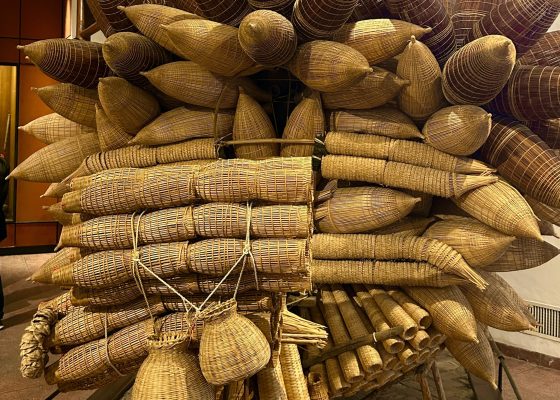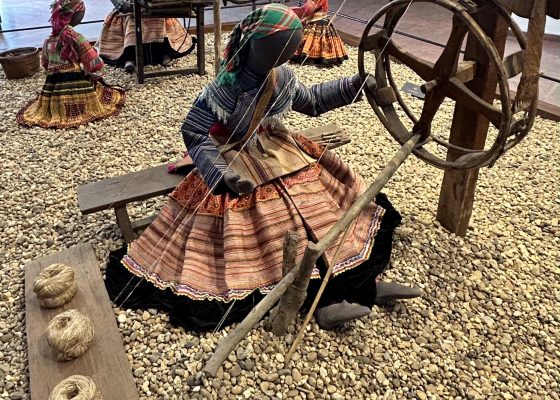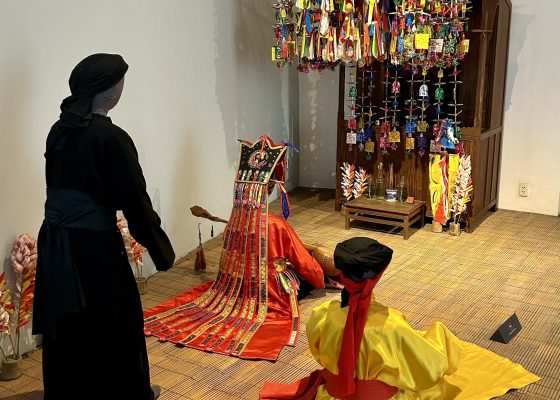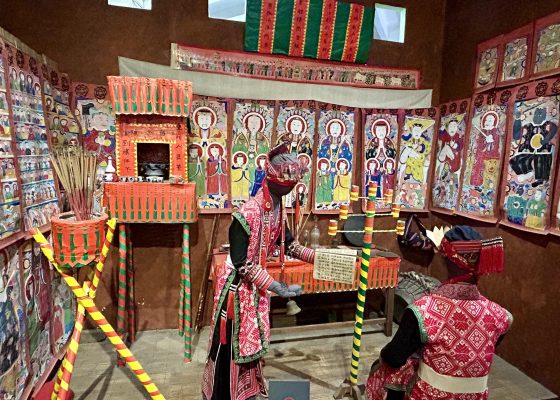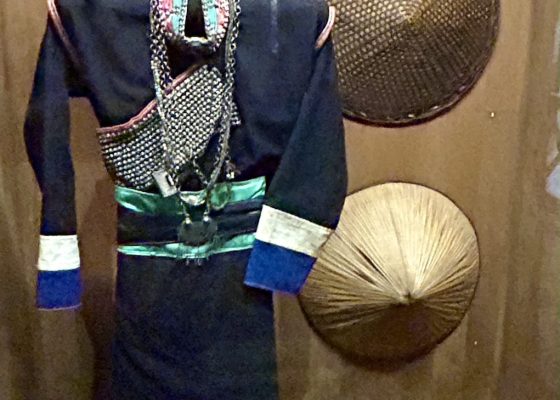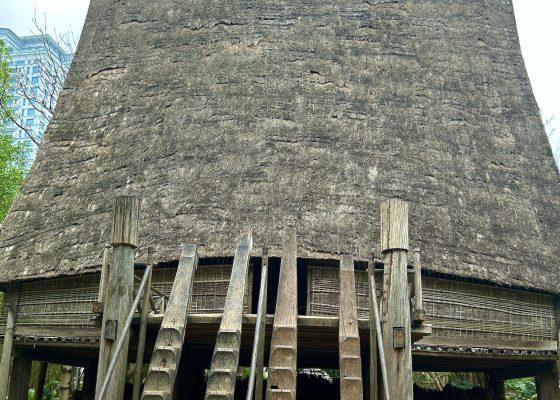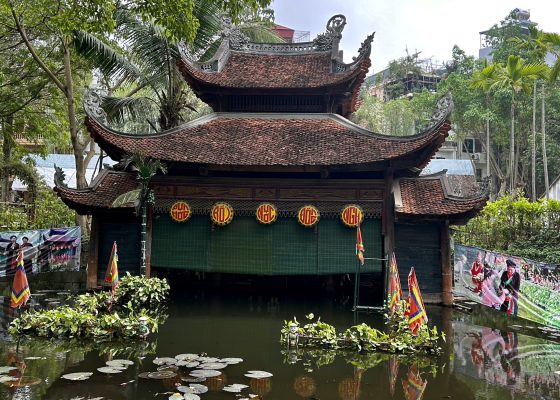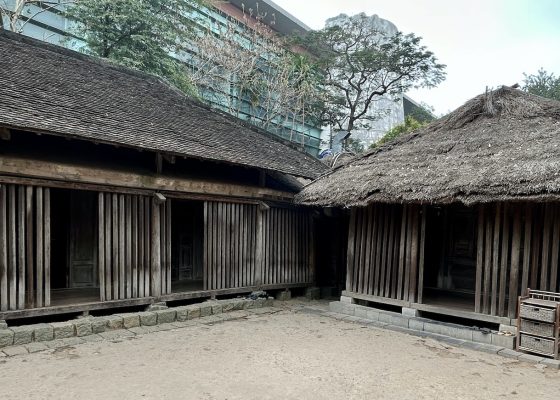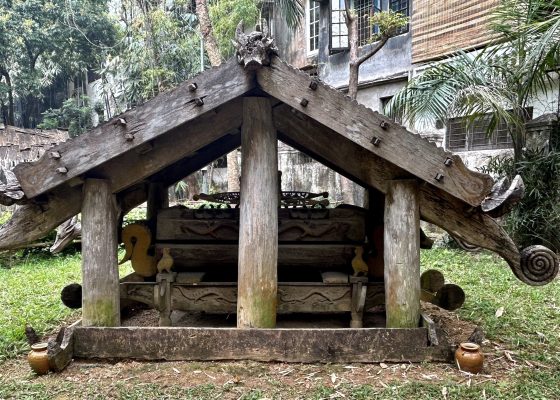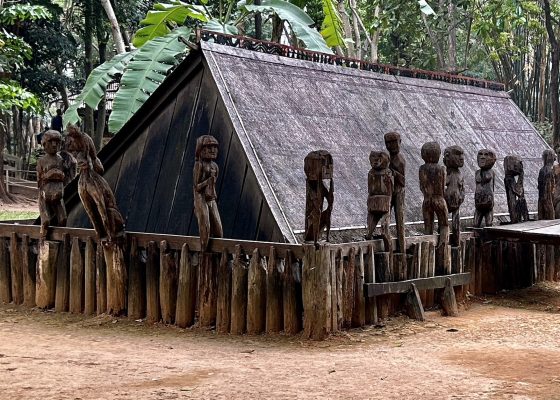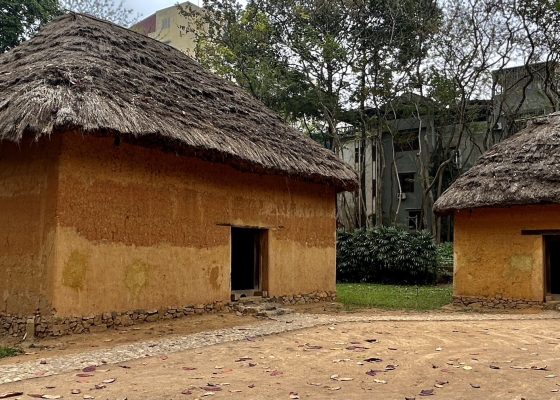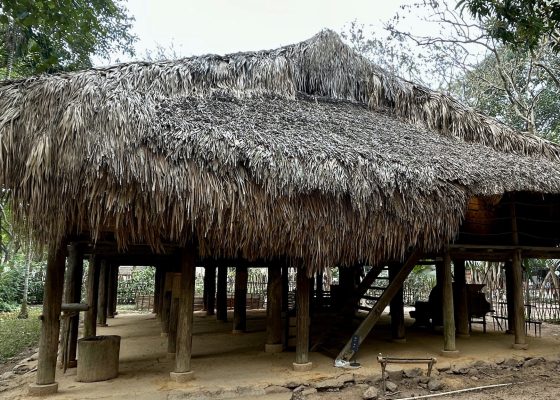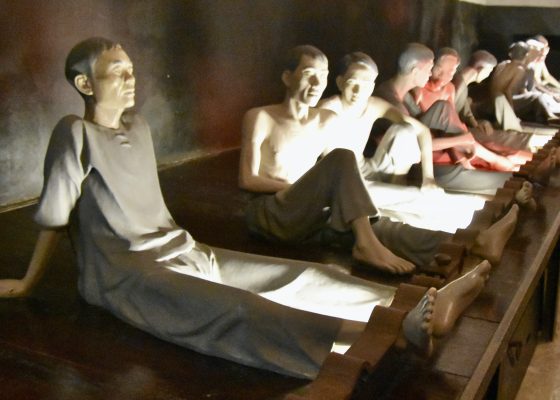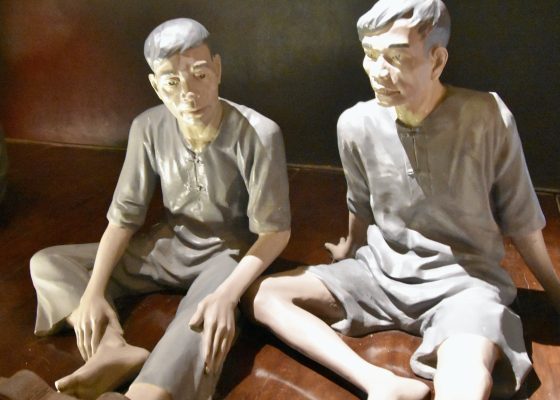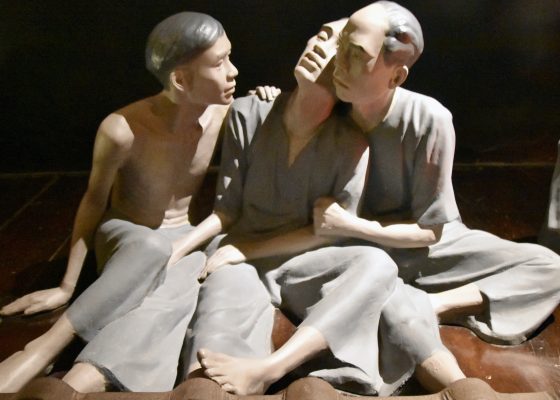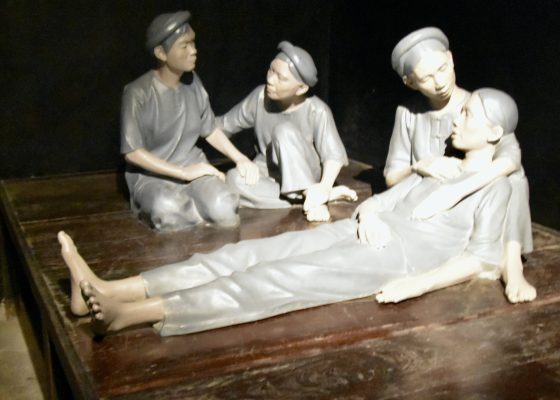Hanoi – Touring Vietnam’s Capital City
In my first post from Vietnam I gave a general overview of the country and fourteen highlights of the tour with Adventures Abroad. In this post I’ll start getting into specifics starting with the capital of Vietnam, Hanoi which is where our tour began after all but one of us on the Laos tour arrived there from Vientiane. Here we were joined by three newcomers as well as our North Vietnamese local guide. Our visit to Hanoi was actually done in two parts with a sojourn to the Halong Bay area in between, but for the purposes of this post I’m going to combine those two visits into one.
Let’s begin with a quick look into the history of Hanoi.
The first thing I learned almost from the moment we landed in Vietnam is that here the name is actually two words – Ha Noi which apparently means city beside or inside the river. The river in question is the Red River which flows south from China and empties into the Gulf of Tonkin at Haiphong. It has always been a natural transportation route between the two countries and helps explain the dominance of North Vietnam by China for much of its history.
The second thing I learned is that the name of the city today is quite recent, dating from only 1831 when the last Vietnamese dynasty, the Nguyen, changed the name from Thang Long which means ‘rising dragon’. Thang Long had been the capital of Dai Viet since the first Vietnamese dynasty, the Ly, chose it in 1010. The Nguyens had moved the capital from Thang Long to Hue in 1802 and the latter city remained the capital of Vietnam until 1945, although the French administration of what they called Indochina was run from Hanoi. After WWII Ho Chi Minh’s Communist party declared it to be the capital once again and it has remained so ever since.
As I noted in my first post on Vietnam, the history of the north of Vietnam and the south are completely different. For over 1,000 years the north of the modern country was ruled by China and it was during this time that the city was first fortified. When the Vietnamese finally expelled the Chinese in 1009 and established their own empire, they ran it along the same lines as the Chinese had with a centralized civil service. Chinese influence in Hanoi has remained strong in terms of architecture, the arts and the cuisine ever since. This is somewhat ironic as Hanoi may well be the most homogenous city I have ever visited. Almost 99% of its residents are Vietnamese.
Today Hanoi is a massive city of over 8 million of which at least half of them drive the ubiquitous motor bikes on which Tony Bourdain toured the city with his Vietnamese friend Linh on many occasions. The first thing we learned from Claude, our AA leader, was how to navigate between a stream of hundreds of speeding motorbikes without getting run over. The important lesson was – do not stop and never step backwards. I am pleased to report that nobody got hit either in Hanoi or Saigon despite a million chances to do so.
Looking back at my time in Hanoi I do not have a very clear picture of the city and I think that’s because I didn’t have the chance to get out on my own as I did in Saigon. This is not meant as a criticism of the place, but rather a need to return for a longer visit to really get a better feel of it. Instead what I have are very vivid memories of specific places we visited. So let’s start with what turned out to be one of the highlights of the entire Vietnamese tour, a trip to look at a stuffed dead man.
Ho Chi Minh Mausoleum
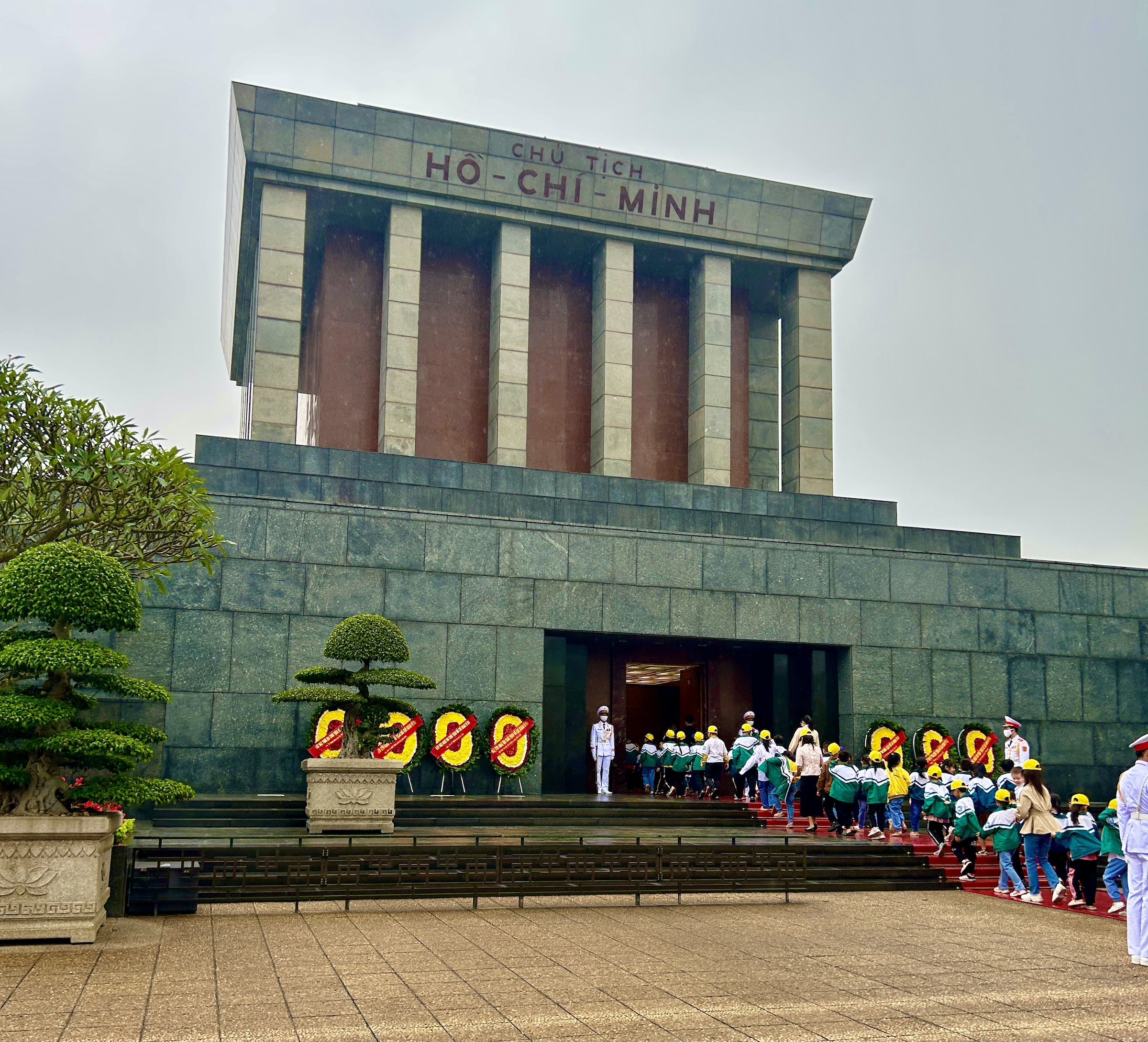
For reasons beyond my ken the Communists love to stuff and display their dead leaders, including Lenin, Mao and the two North Korean nut jobs. Ho Chi Minh died in 1969 when the outcome of Vietnamese War was still very much in doubt. With the aid of the Russians he was embalmed and preserved until it was put on display in a mausoleum, modelled after that of Lenin’s, was opened in 1975. Located in the same area where Ho had his modest office and directly across from the National Assembly of Vietnam, the mausoleum reopened not long before our visit after being closed due to Covid since 2020. Our group was among the 130,000 tourists who visited in the first half of 2023. However, we were dwarfed by the 1.5 million Vietnamese who visited during the same time. Based on our visit I would say a good number of these were school children.
Now ordinarily lining up for over an hour to see anything less spectacular than the Pyramids is a non-starter for me and to be honest when Claude told us how long we would have to wait to get in I considered bailing. However when we got to the place to get into the lineup shown below, I changed my mind. Notice the girl looking straight at me in that photo. Also notice that we were the only non-Vietnamese people in line.
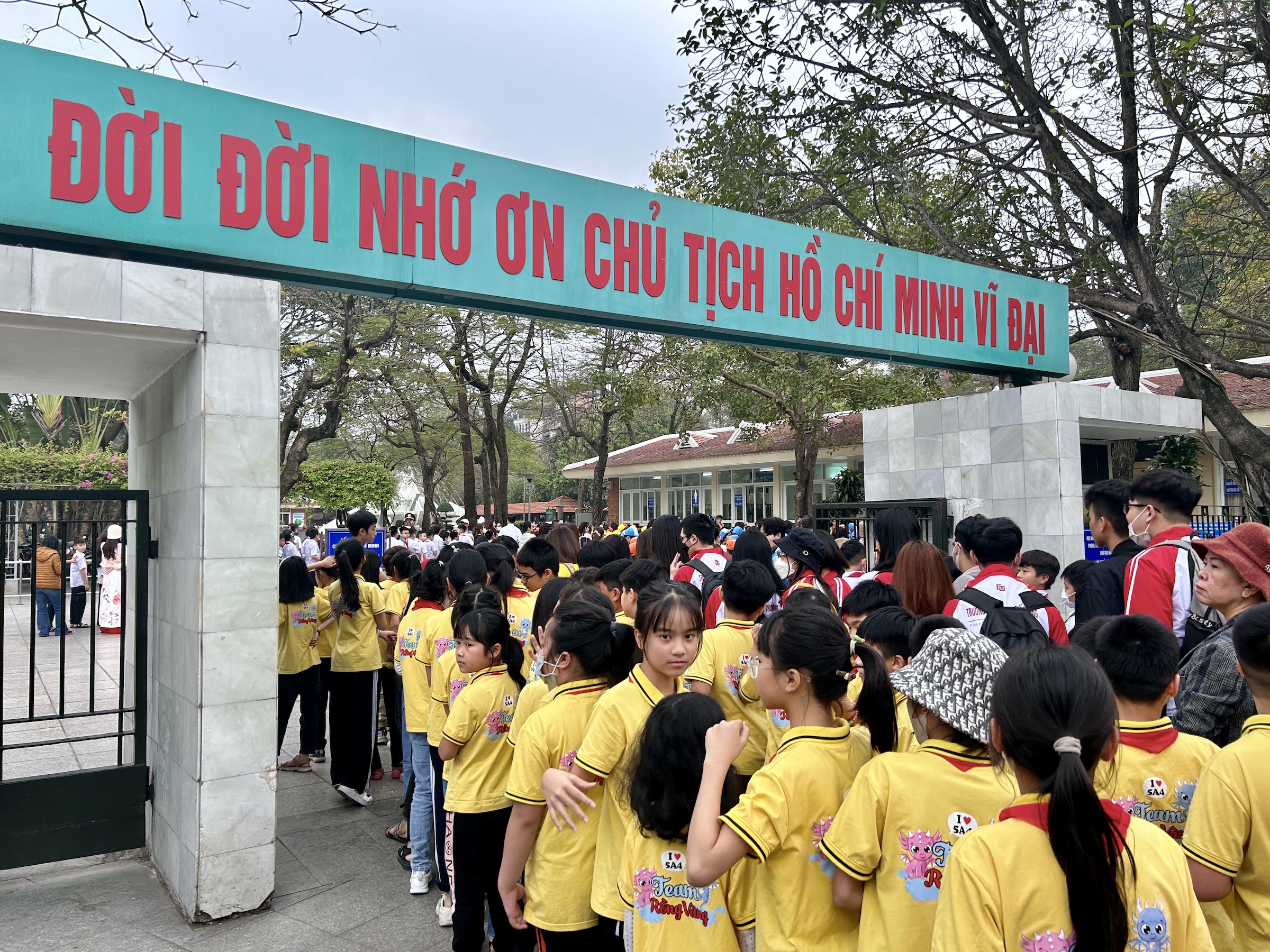
It’s only fitting that I am writing this post on December 18th because that was the day in 1972 that the United States launched Operation Linebacker II, aka the Christmas bombings, that lasted eleven days and killed over 1,600 civilians in Hanoi and Haiphong. It was the last and completely futile effort by the US to stop the inevitable. So here I am outside the final resting place of the leader of North Vietnam with a mixed group of Canadians and Americans some forty one years later. There is no way these kids could tell the difference between a Canadian and American and I had to wonder how much resentment they would harbour against us. After all, given our ages, some of us could have been in those B-52 bombers.
It turned out we had nothing to fear, the children were as friendly as could be and were constantly waving and yelling ‘Hello!, Welcome!’
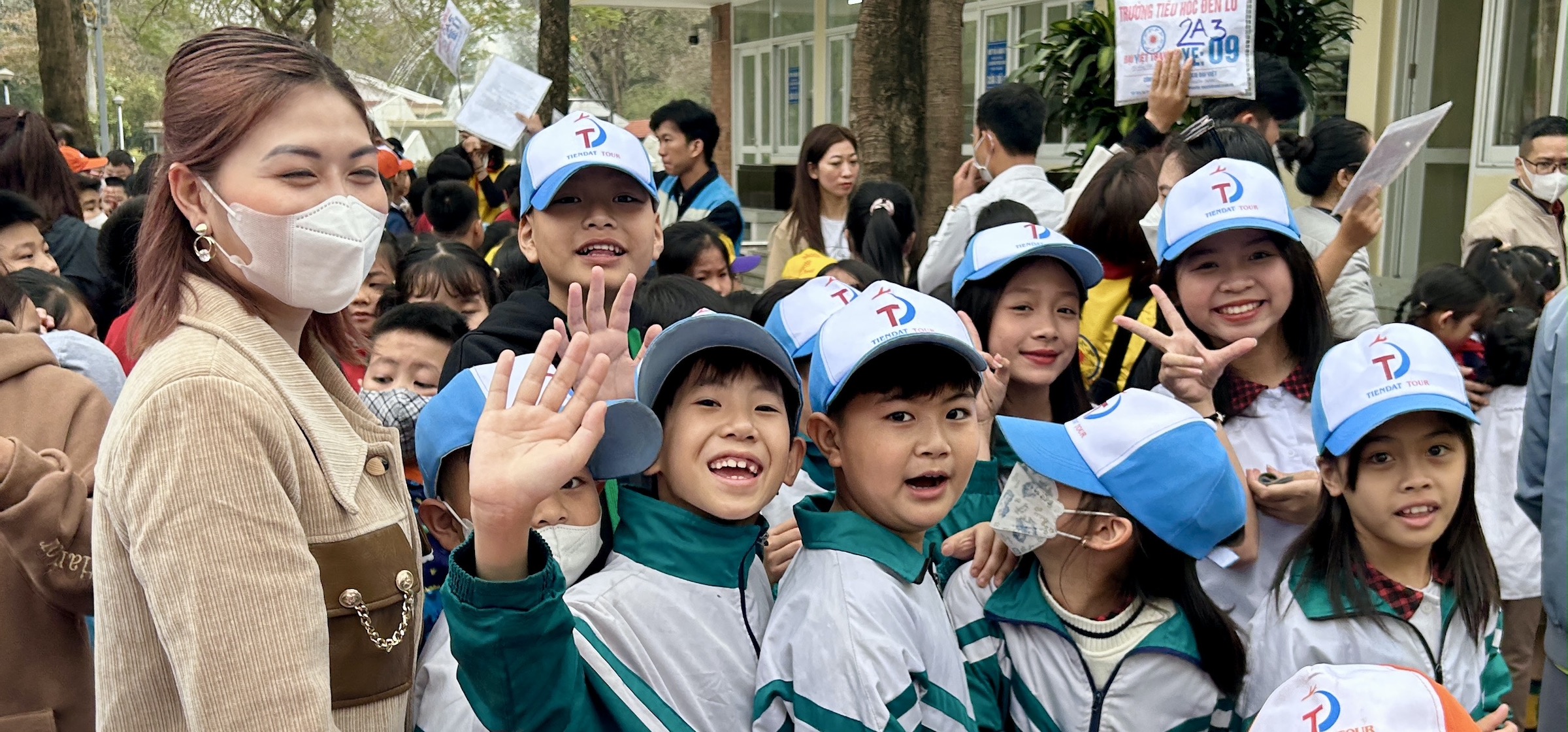
This was repeated over and over again with one group after another and made the long wait quite bearable.
But these kids weren’t old enough to remember the war; what about people who could? Would they be resentful or hostile? Again, not at all. A number of older adults wanted their pictures taken with us, such as this one with Alison.
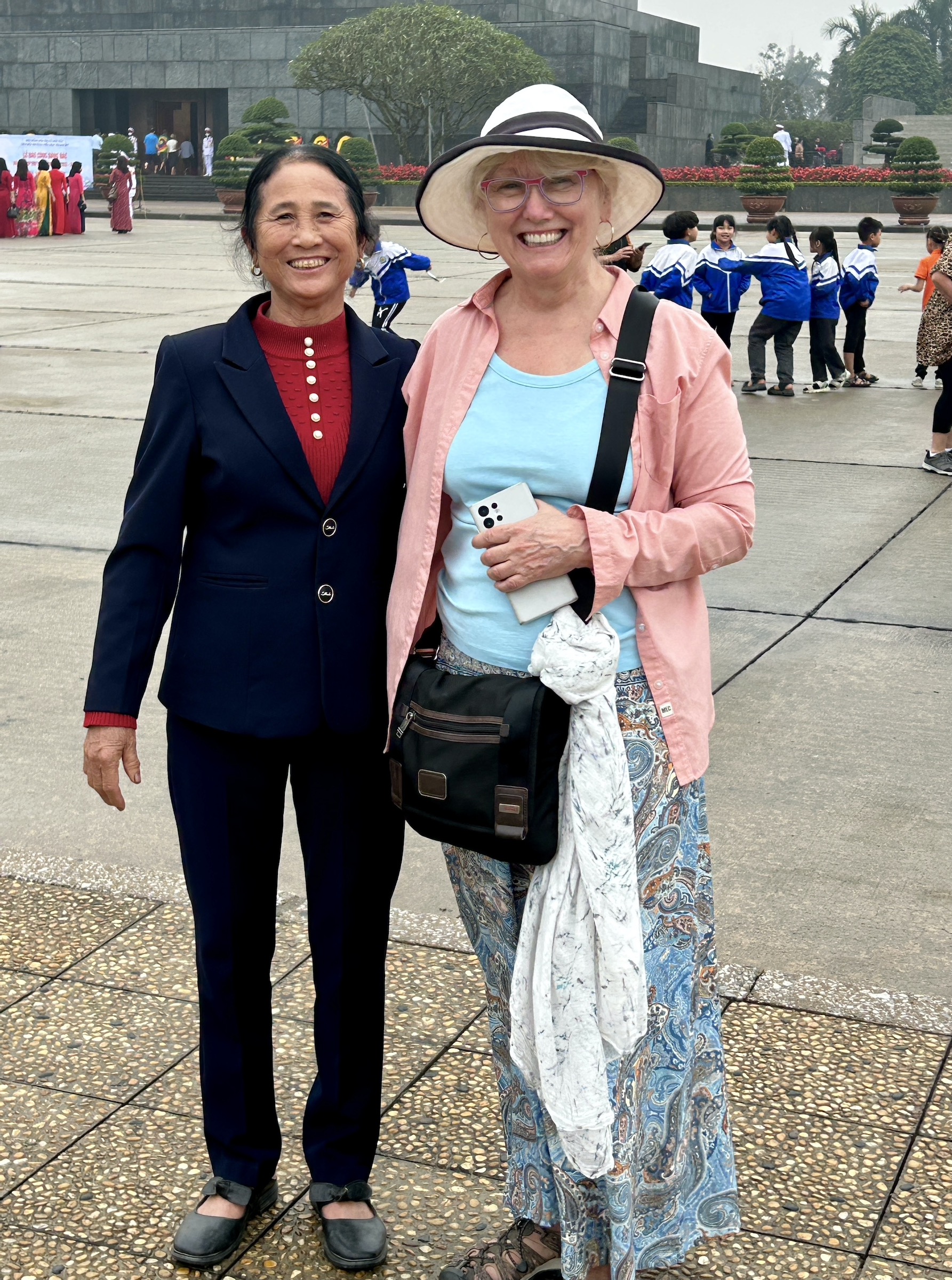
And then entire classrooms wanted to be photographed with us. Here’s Claude obliging one group.
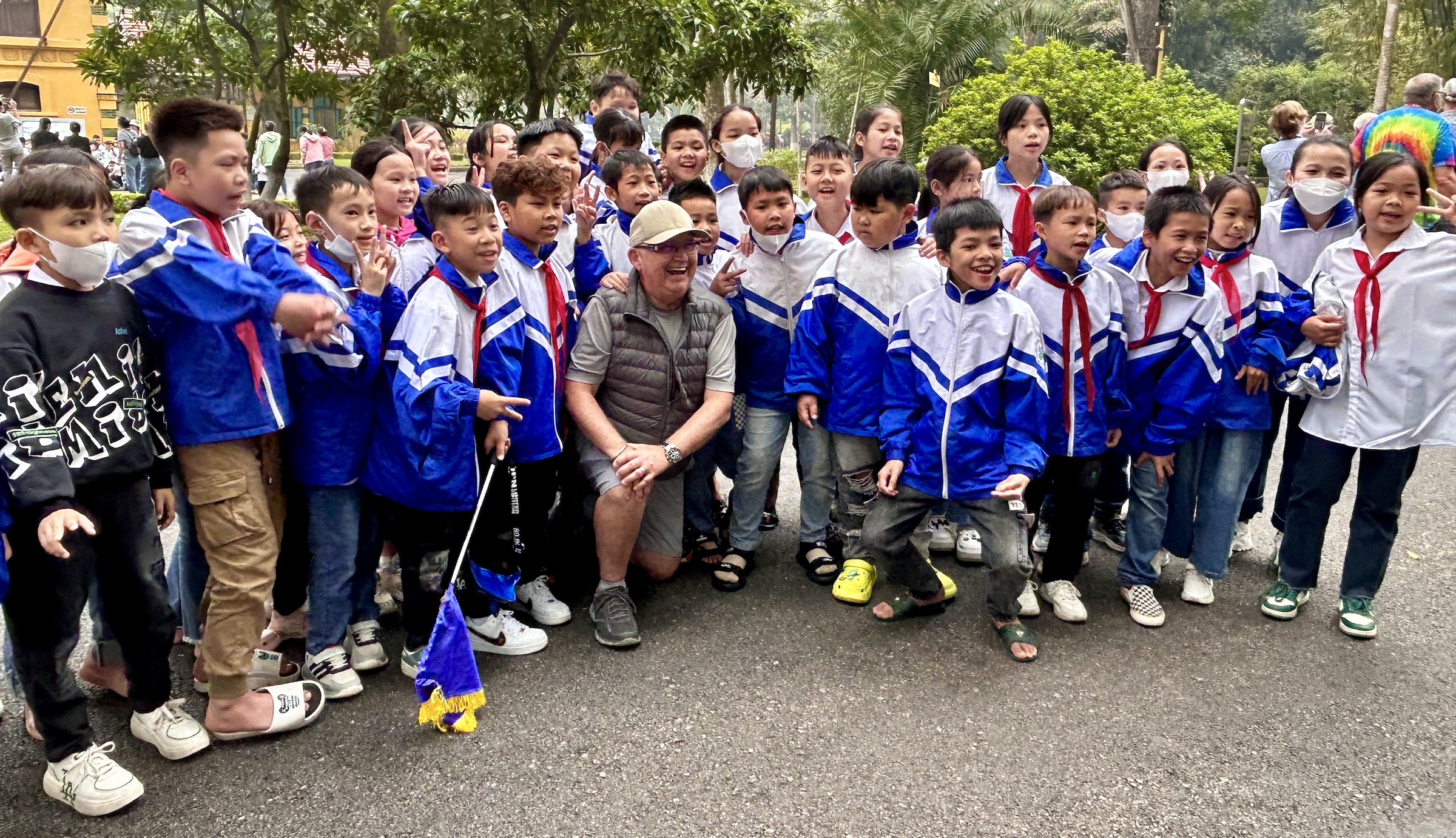
It was quite an unexpected and wonderful experience.
Oh, and we did finally get into the mausoleum where we stepped onto an escalator and were whizzed by the preserved body of Ho Chi Minh who looked far larger in death than in life. This Ho was at least six feet tall while the living Ho was only 5’5″. In any event it was anticlimactic after the reception we had received on our way to get here.
After the mausoleum we had a quick look at the National Assembly building and I dutifully took Alison’s picture in front of it to add to her collection of Communist legislatures from Moscow to Beijing to Havana and most recently Vientiane.
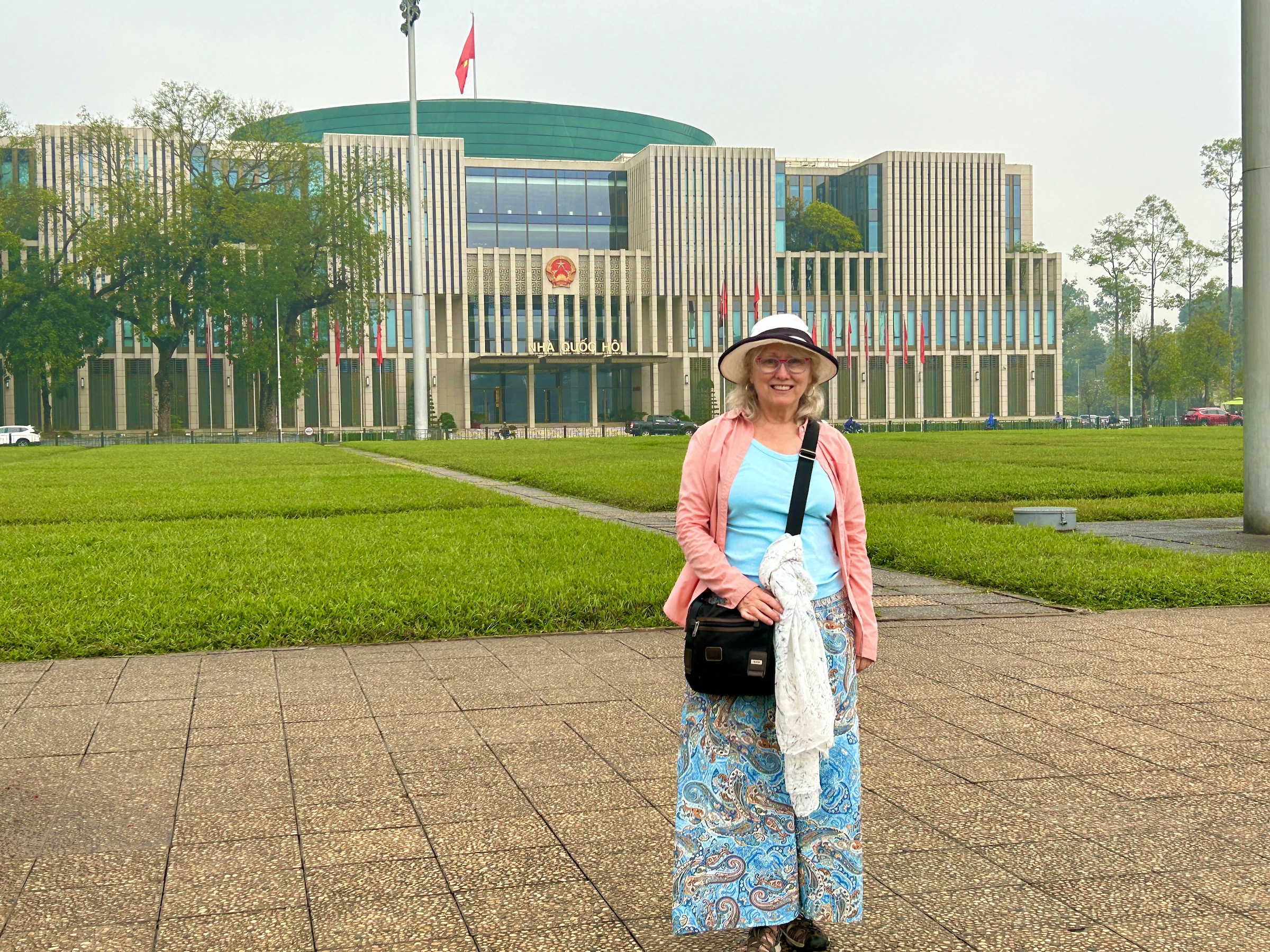
Nearby the mausoleum area is Ho Chi Minh’s former home and office which we viewed from the outside. Rather than occupy the former Presidential Palace which is also nearby, Ho chose instead to live a simple life, setting an example for his people. He had this house which is actually on stilts, which you can’t tell from this photo, constructed in the manner of a traditional Tay house, a Thai ethnic minority in Vietnam. That makes him about the only Communist leader ever to not to live like a modern tsar after seizing power. He’s the only one I have ever had any true respect for.
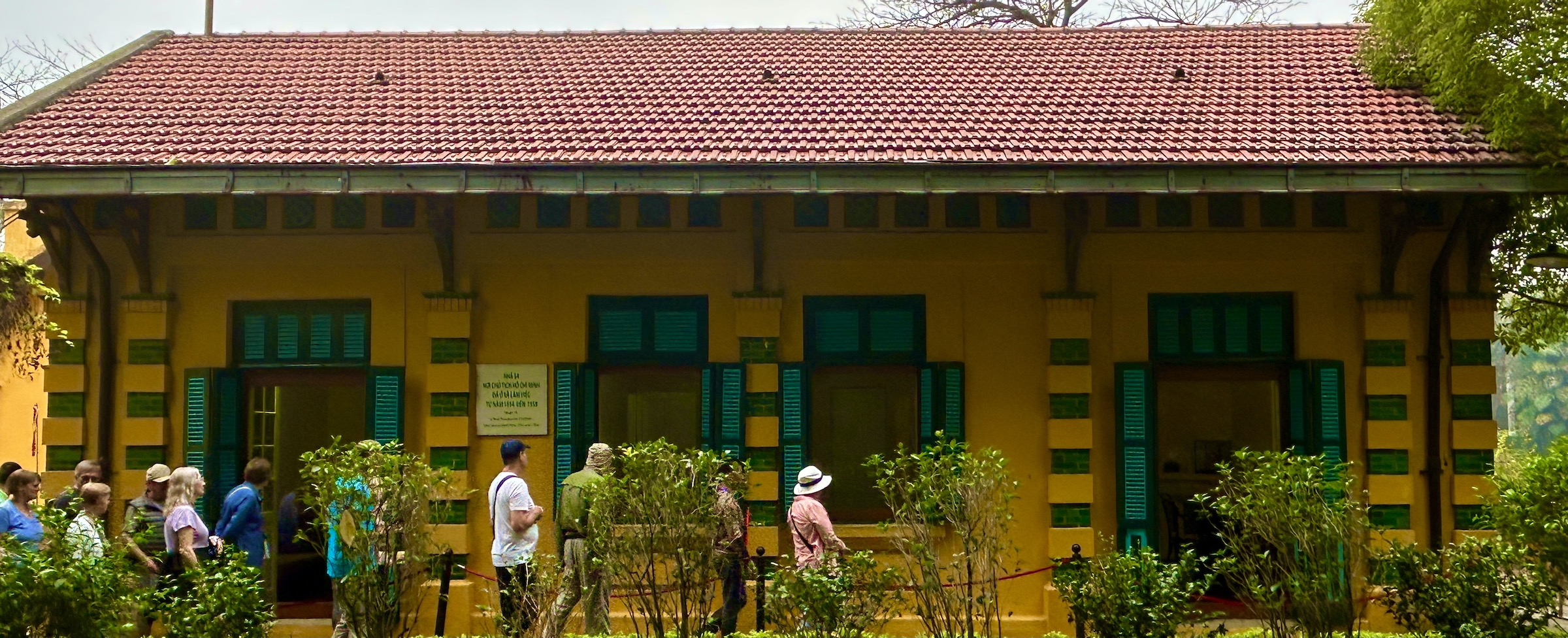
This is his office complete with pith helmet.
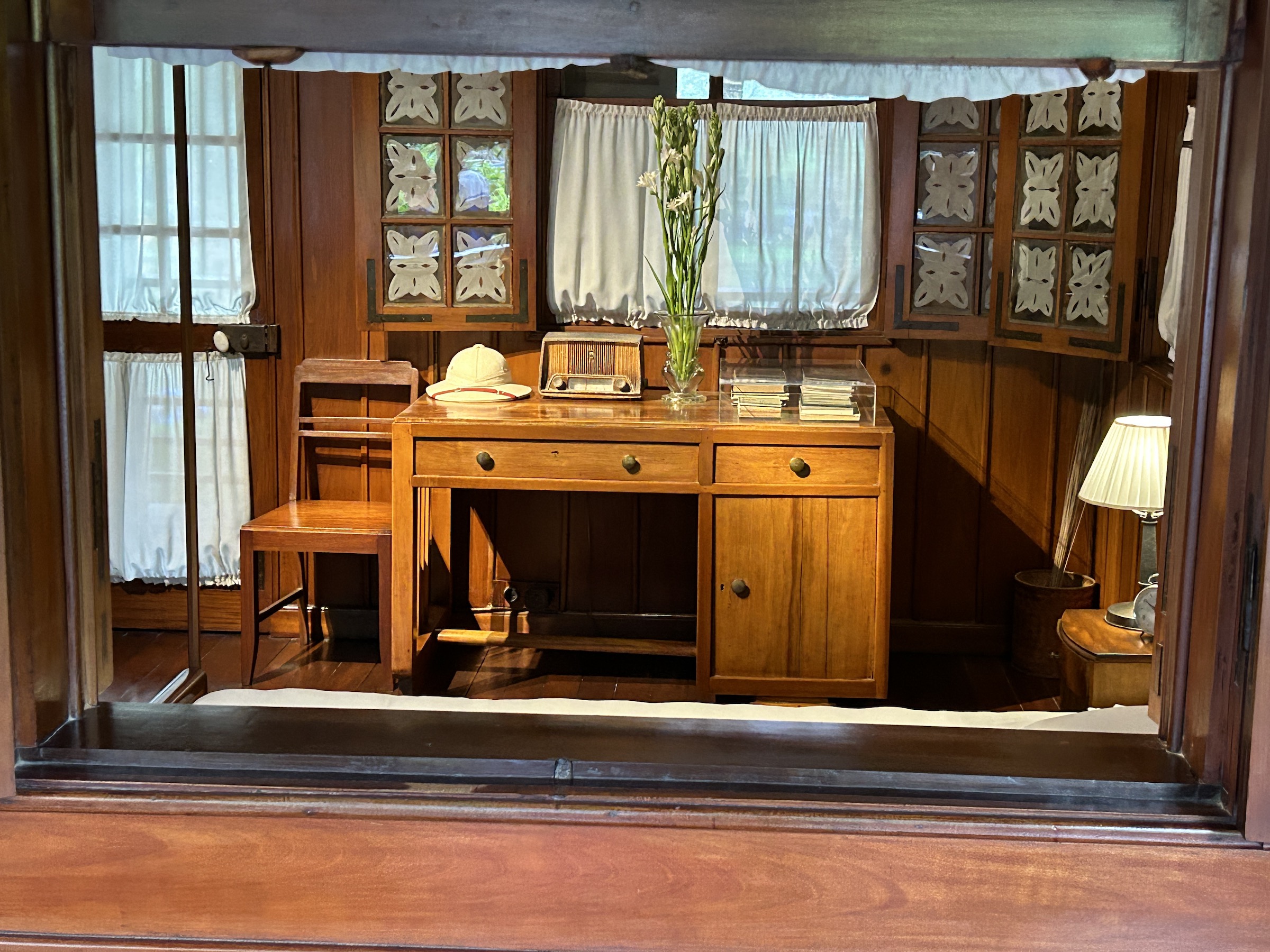
This is Presidential Palace Ho eschewed. It’s a classic example of French colonial Indochinese architecture with its signature yellow paint that in this part of the world is a symbol of royalty and power.
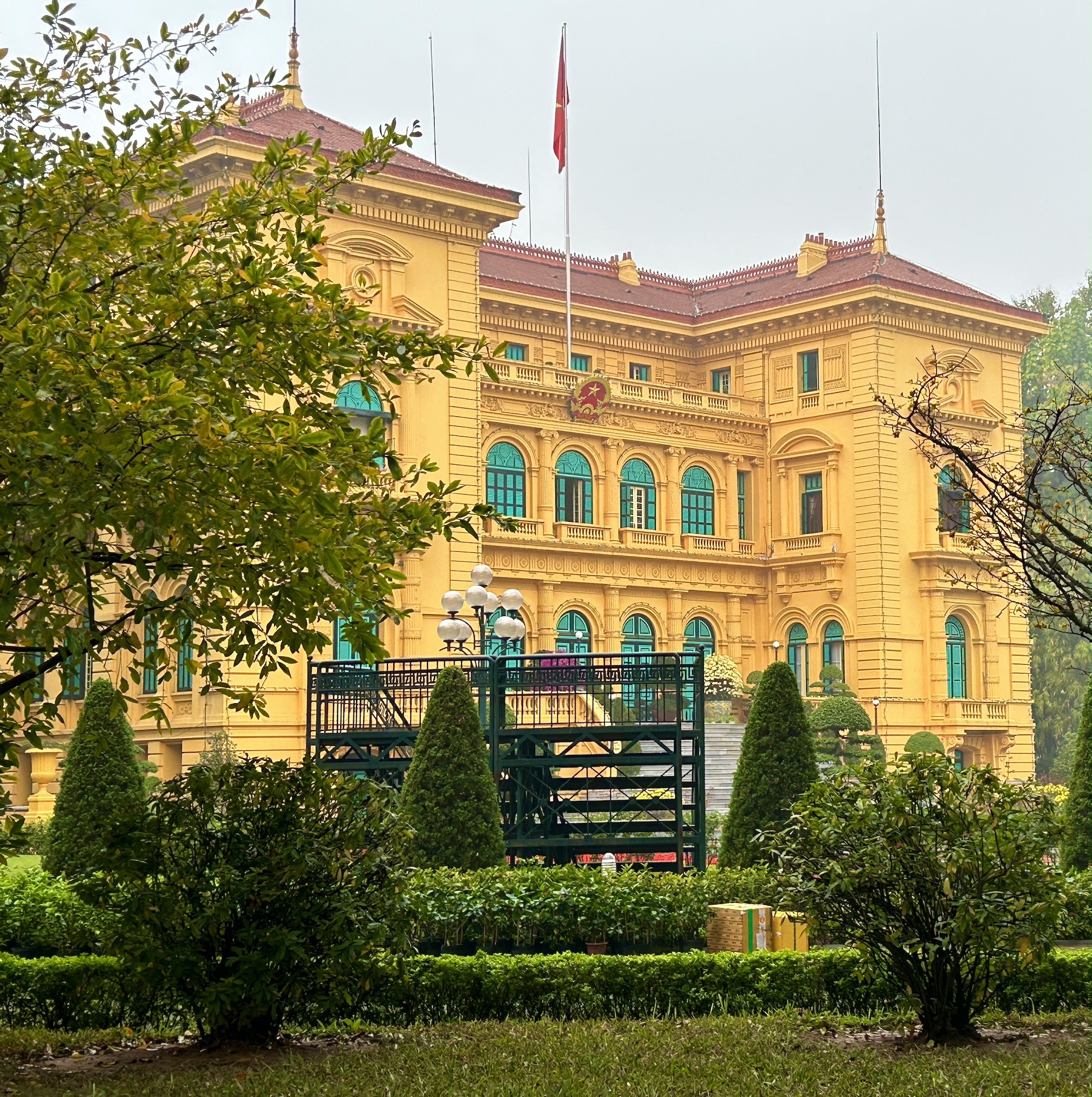
Also in this area of central Hanoi is the One Pillar Pagoda which is one of the two most sacred buildings in Vietnam. Buddhism in a number of forms has been the primary religion of Vietnam for well over 2,000 years and while religious activity was initially discouraged by the Communists, today there are no active efforts to suppress it and it is again thriving. This temple was erected by Emperor Lý Thái Tông, the second Vietnamese emperor after attaining independence in the 11th century. He had it built as the result of a dream literally coming true which I won’t go into. You can read the story by following the link above. It was originally built in 1049 and subsequently added to in 1145, so it’s pretty darn old. Except it isn’t. Someone in the French army blew it to smithereens in the waning days of the French occupation in 1954 so what you see today is a faithful recreation.
I wonder if we had been French waiting to get into the mausoleum if we would have received a different reception?
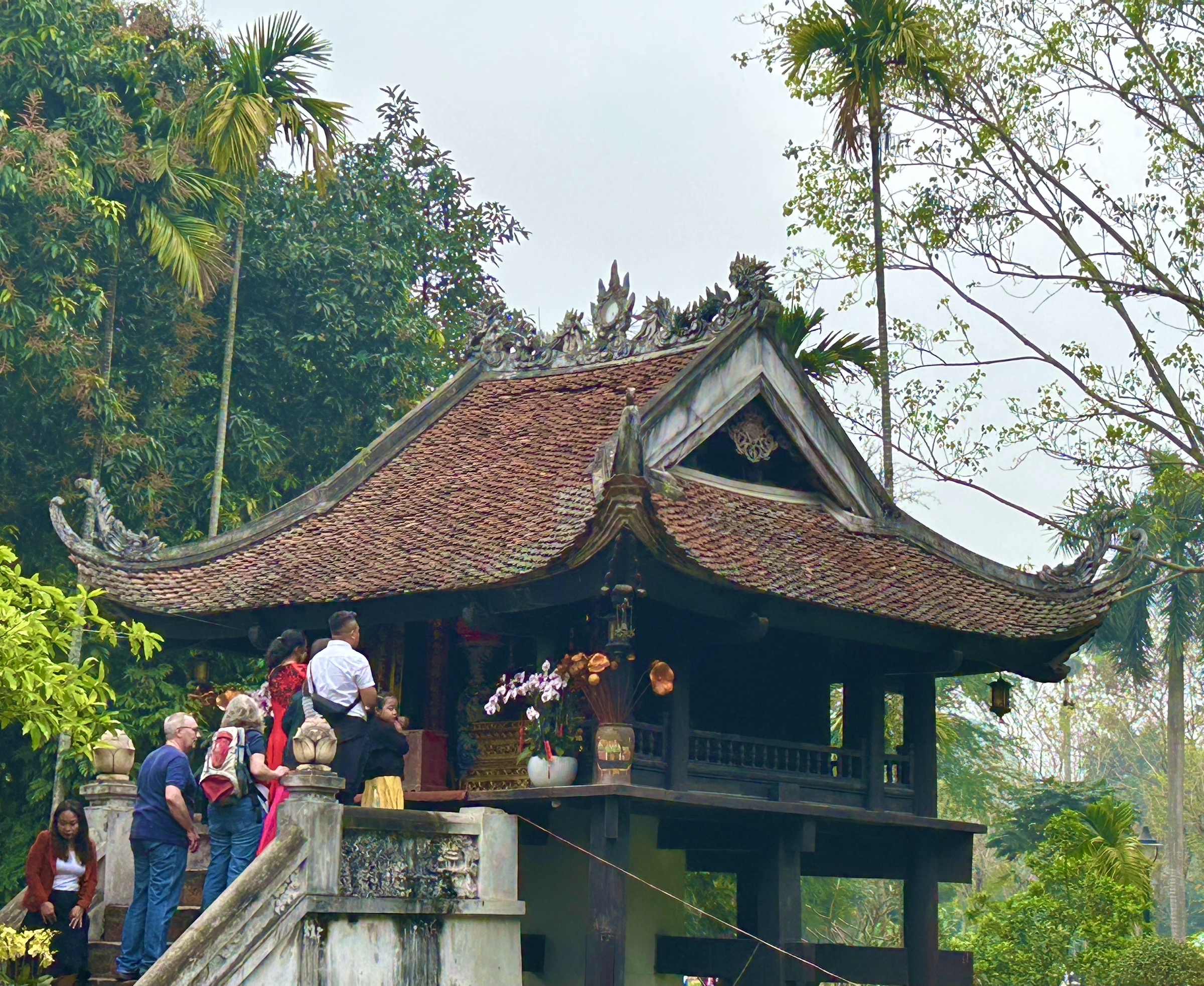
My photo of the temple does not show the reason why it is called the one pillar pagoda, but this public domain photo does.
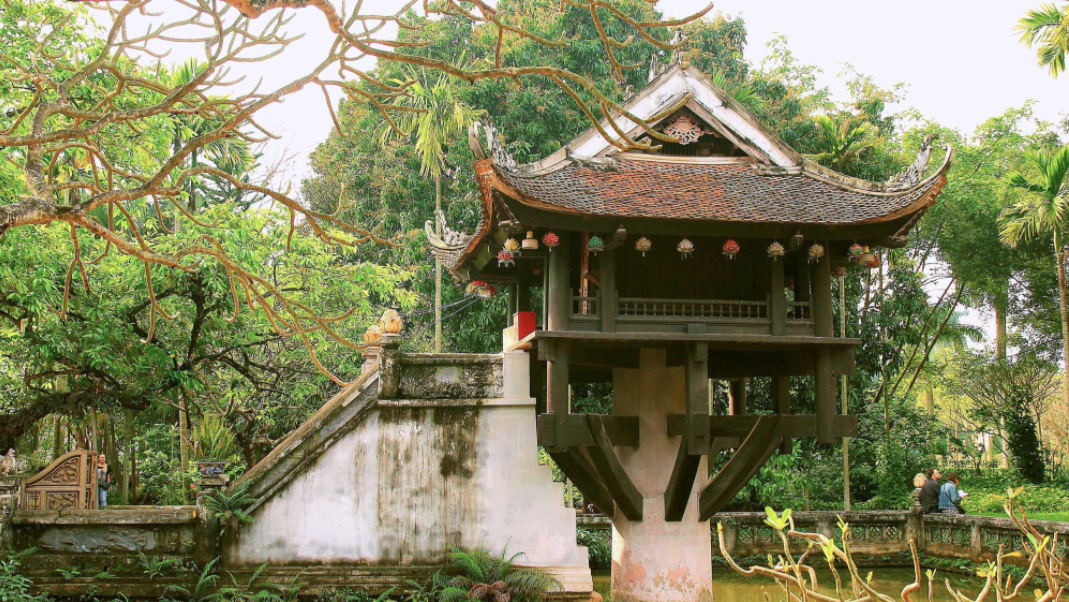
Inside is this figure of Quan Âm which is the Vietnamese name for the Bodhisattva of Compassion, widely venerated throughout east Asia. A bodhisattva is a person on the path to becoming awakened and attaining Buddhahood. The Jesuits likened her to the Virgin Mary and some people think the analogy is fitting. Sometimes she appears with many arms and in other representations she has the usual two. Remember her name as we will be seeing a lot of her during our stay in Vietnam where here association with kindness and mercy has made her a rival to the Buddha in popularity.
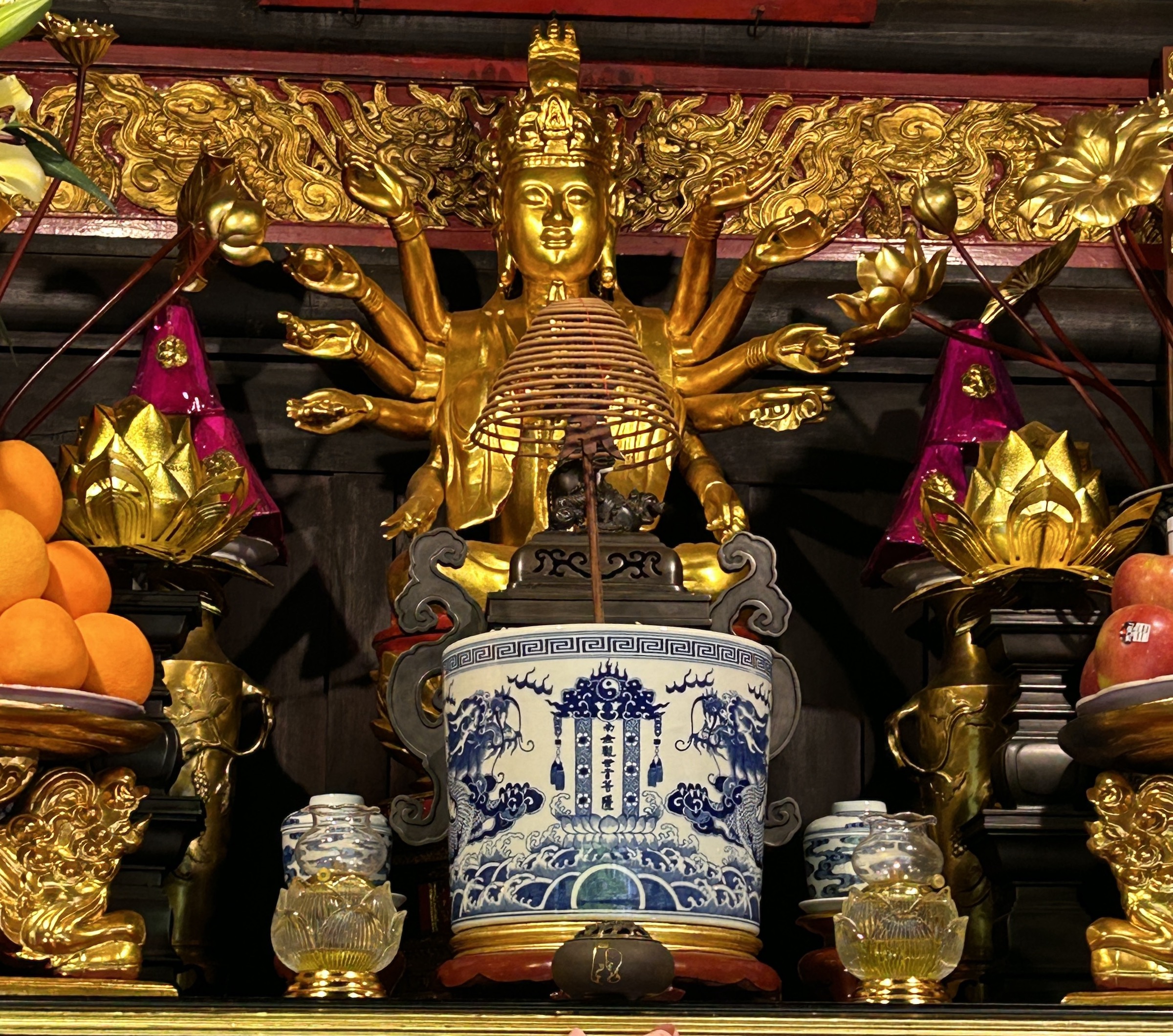
Buddhists believe in what we would call reincarnation and they call samsara, the cycle of life and death that needs to be broken to obtain nirvana. What you do in this life affects how you will come back in the next cycle. This is aptly demonstrated by a number of billboards not far from the temple. Here are two examples. Whoever came back as the rat is going to be heading to his next cycle shortly.
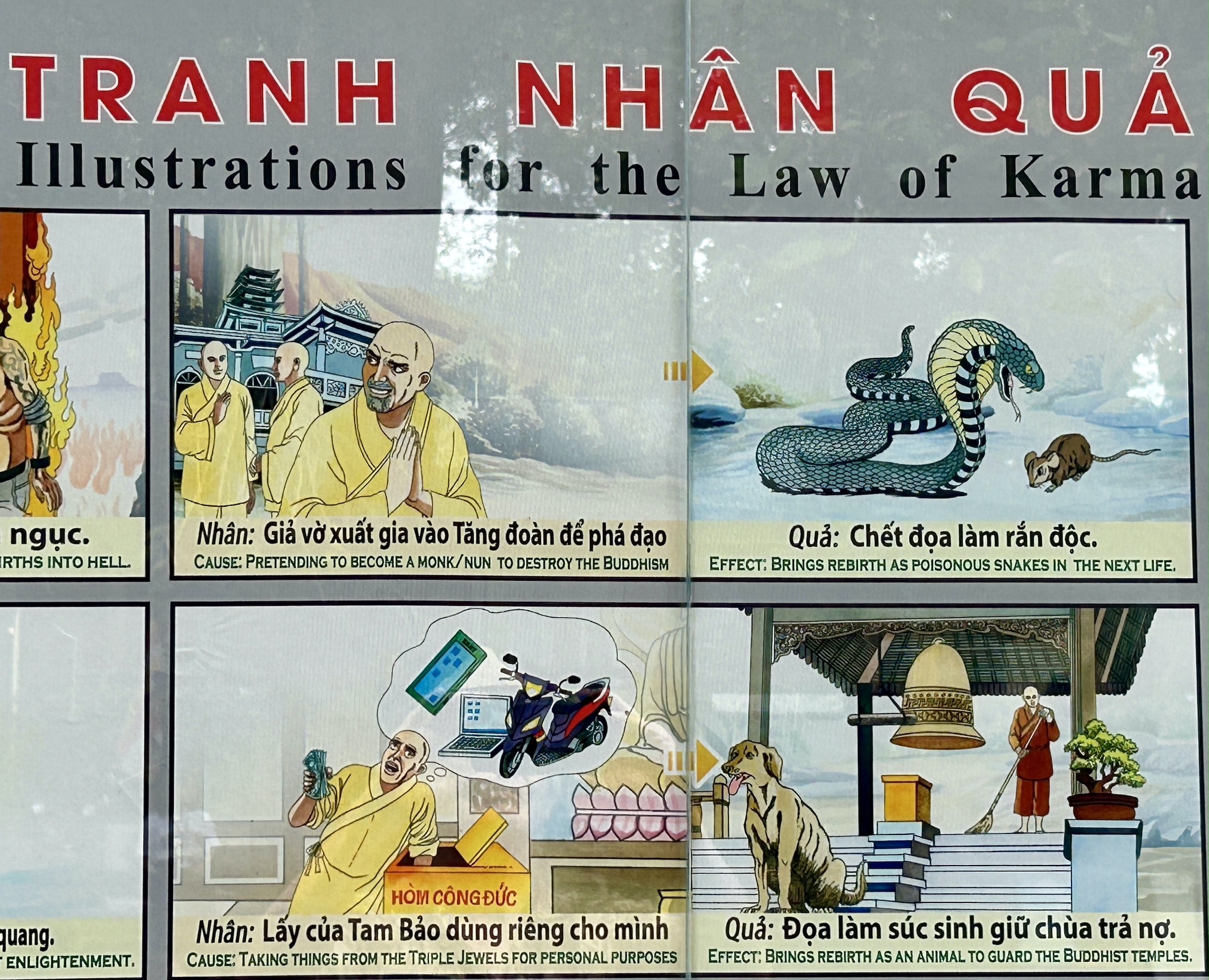
There is a lot more to see in this area of Hanoi including the Ho Chi Minh Museum to which hundreds of people are flocking, but Claude wants us to see a museum that will be less crowded and more objective in its presentation.
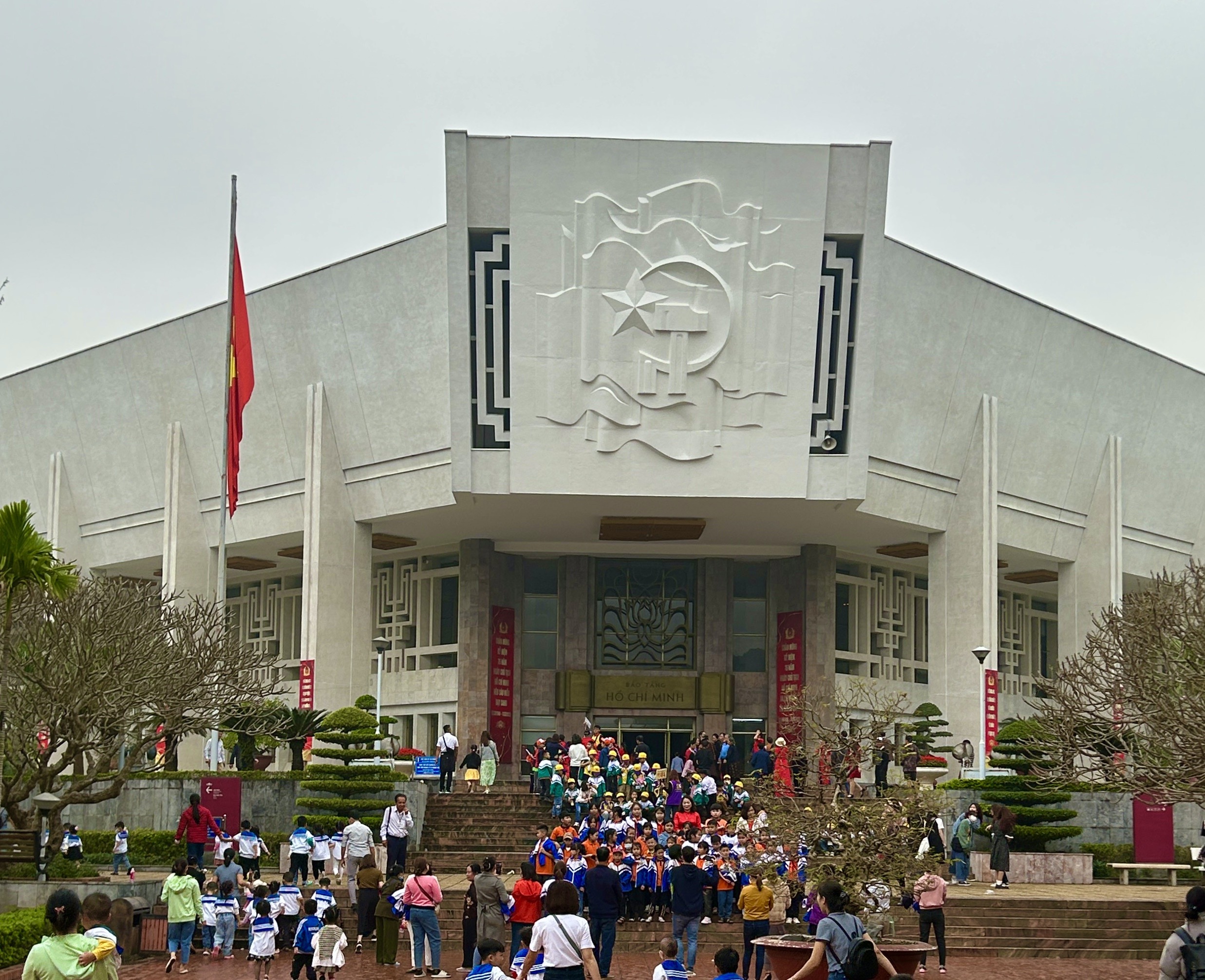
Vietnam Museum of Ethnology, Hanoi
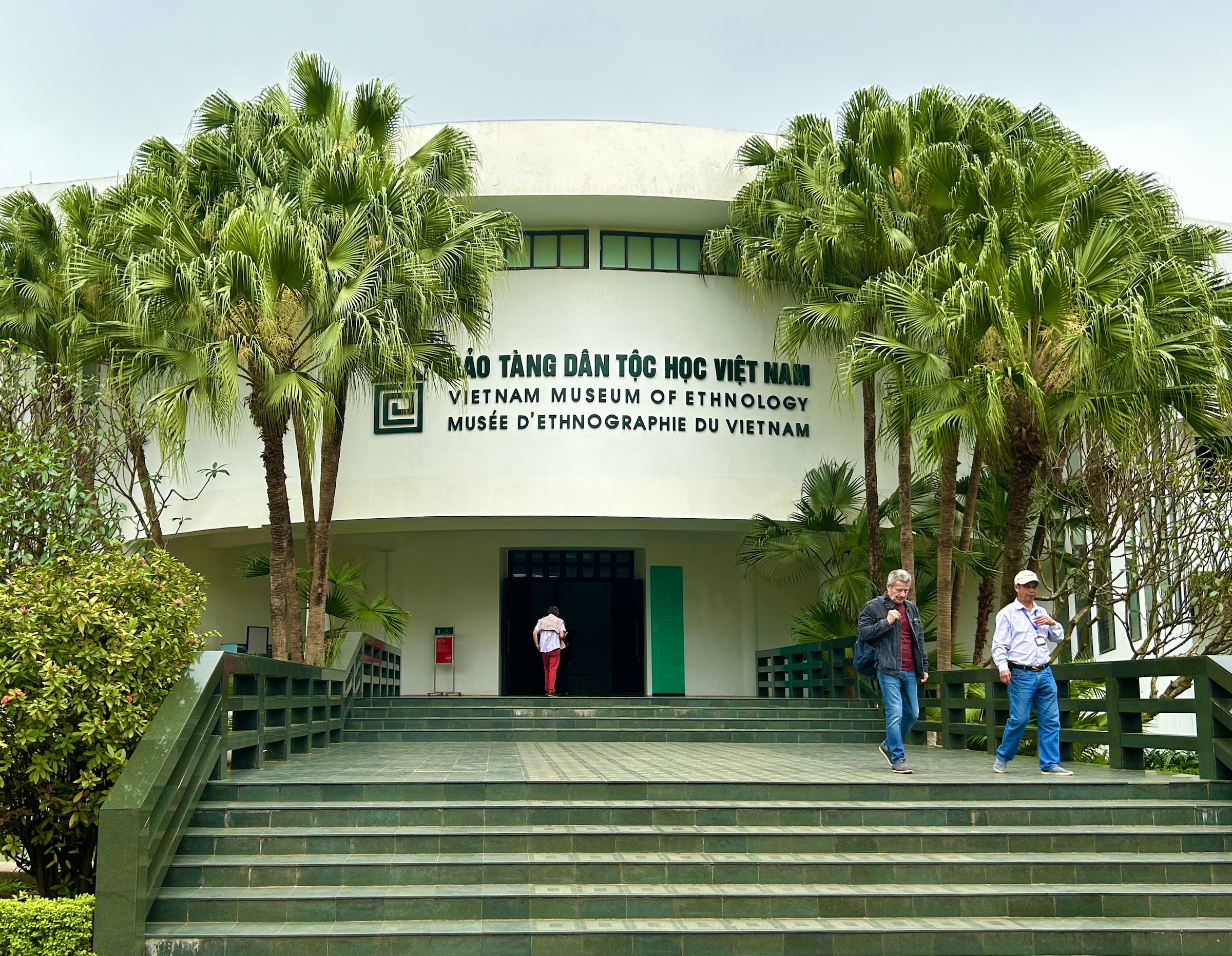
This is the Vietnam Museum of Ethnology and as you can see it is considerably less crowded than the Ho Chi Minh Museum entrance. Thank you Claude.
The museum was opened in 1997 to showcase Vietnam’s various ethnic groups and it does that very well. We learned that there are 54 distinct peoples in the country which was somewhat surprising to me, considering that over 98% of the people in Hanoi are of Viet descent.
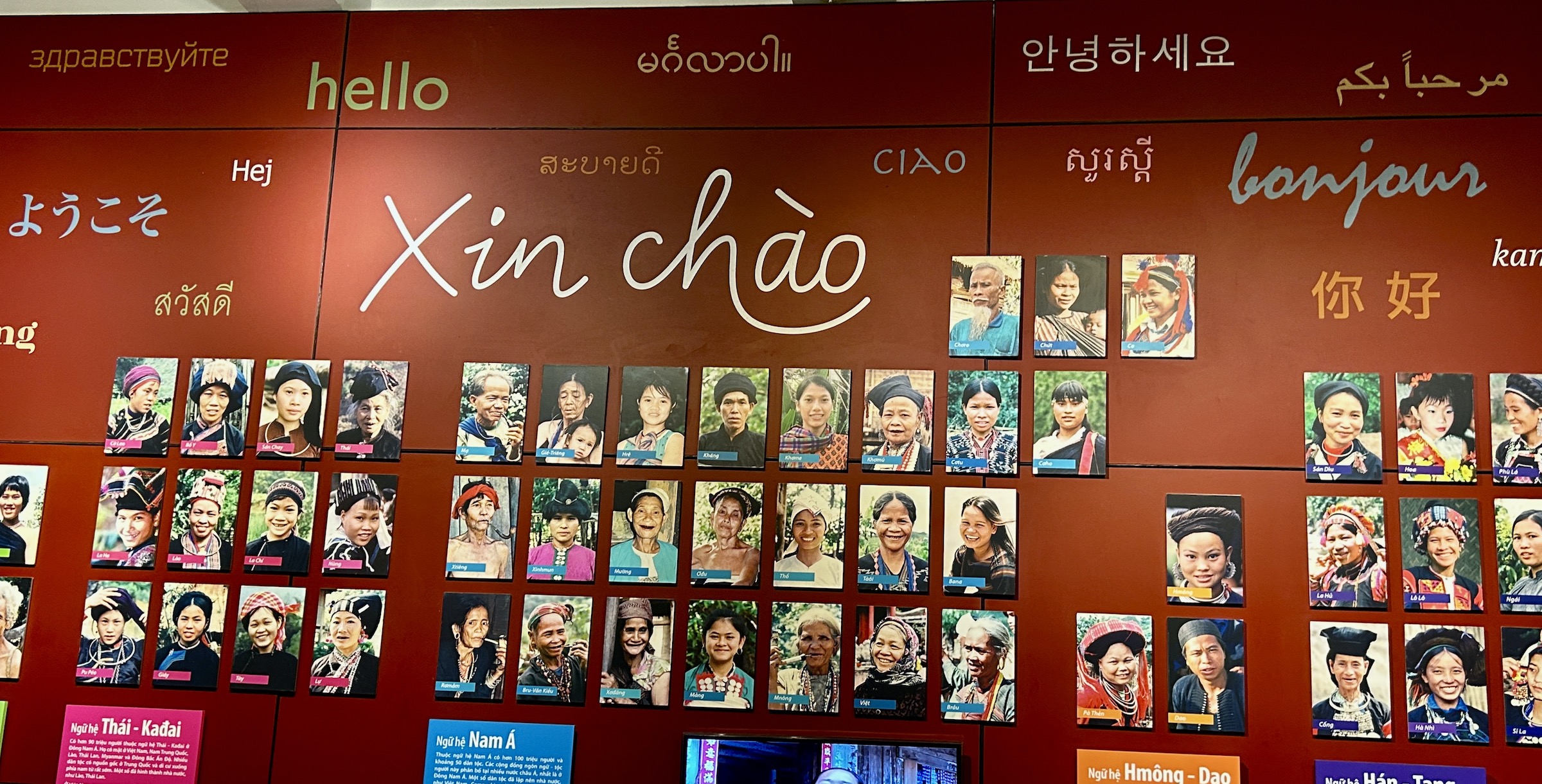
It turns out the great majority of these minorities reside in the Vietnamese highlands where they have their own language, religion, culture, architectural styles and diet. Many are still existing on slash and burn agriculture as we saw in Laos. I don’t have the time or space to go into any detail about these minorities, so I will add a gallery with some of both the inside exhibits and the outside ones. Double click to open an image and double click again to enlarge it.
- Bike Carrying Fish Traps
- Hmong Weavers
- Lau Ceremony of the Tay
- Red Yao Initiation Ceremony
- Tay Brocade Clothing
- Community House
- Small Pagoda
- Cham Houses
- Cotu Tomb
- Giarai Tomb
- Hani Houses
- Tay House
The Temple of Literature

The next place on our tour of Hanoi is a temple complex that was home to Vietnam’s first university, the Imperial Academy, for over 700 years before closing in 1779. The name in Vietnamese is Vän Miéu which translates to the Temple of Literature. While most people associate the great philosopher Confucius with China, he was also revered in the north part of Vietnam not only during the millennium that China ruled the area, but for a considerable time thereafter. Built by the Emperor Lý Thánh Tông in 1070 it is one of the country’s most important historical sites and was dedicated to Confucius. There are five courtyards contained within the walls and you progress from one to the other before reaching the actual temple where Confucius and some of his colleagues are found. The photo above is the main entrance.
This is the Khué Vän pavilion that separates the second and third courtyards. Along with the Red Bridge which we will visit a little later, it is considered one the symbols of the city of Hanoi.
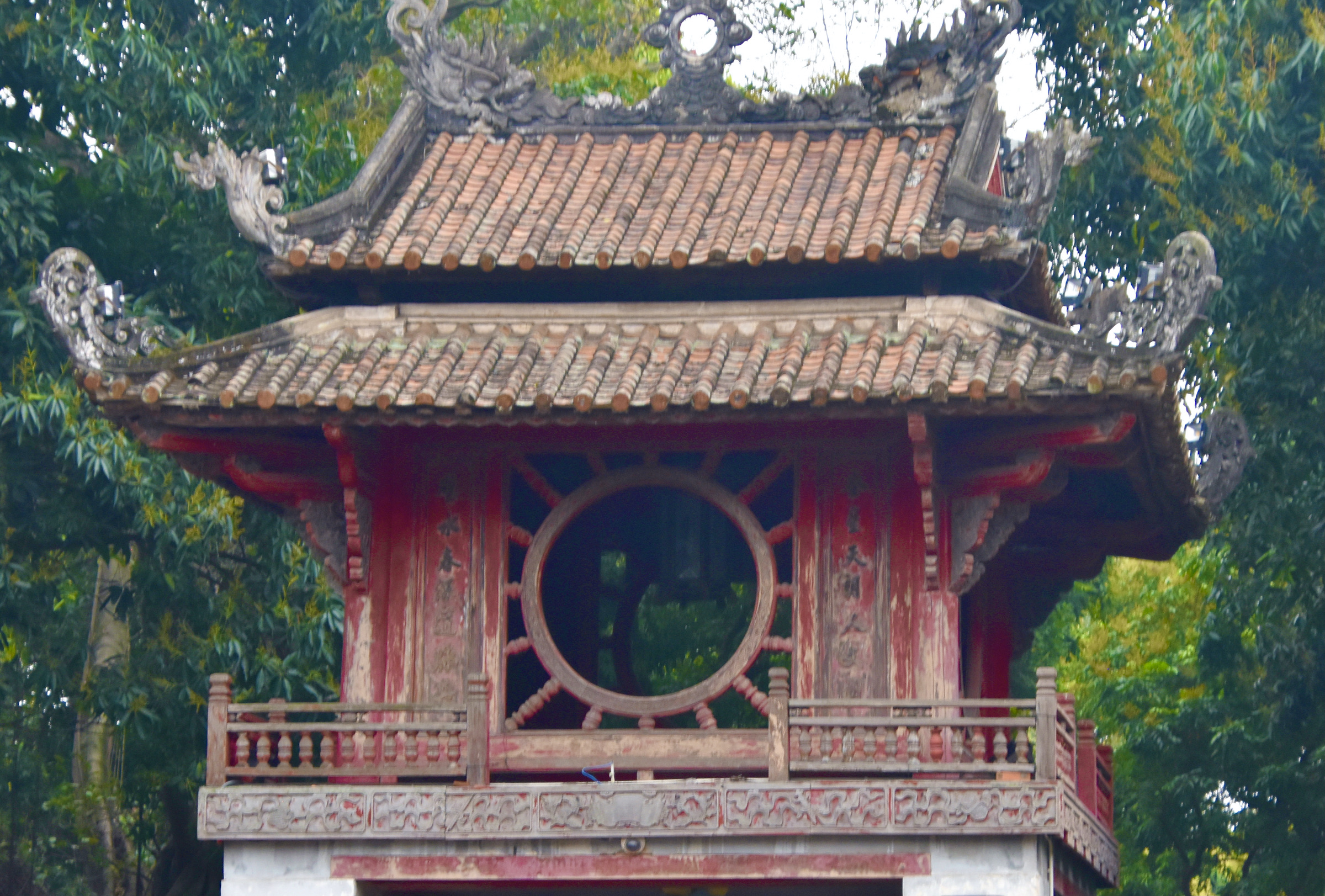
Inside the third courtyard is a large rectangular pond known as Thièn Quang well.
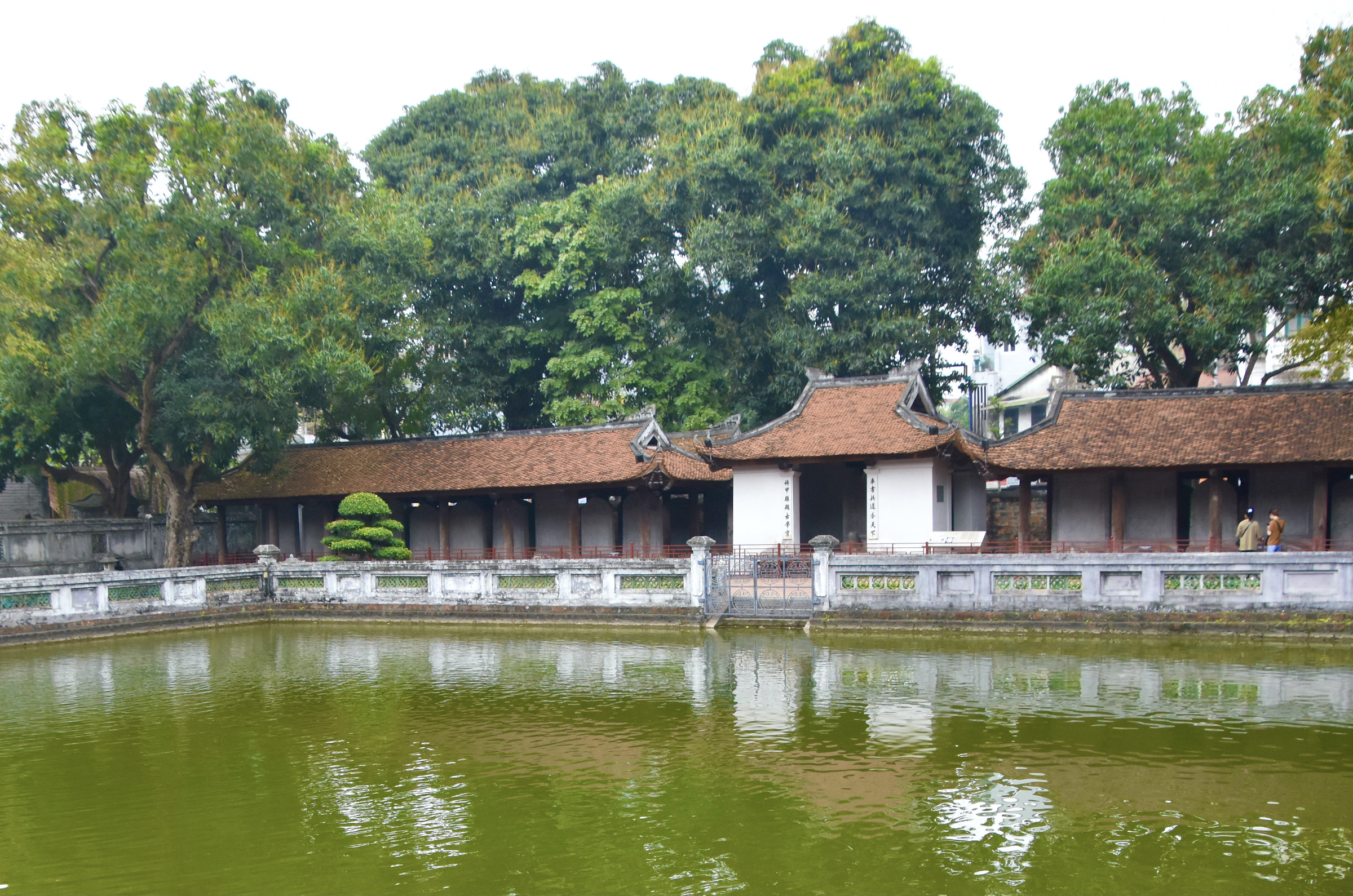
Here under an open canopy is another of Hanoi’s most important historical places, the collection of stone tablets referred to as the Doctor’s stelae. There are 82 of them left out of an original 114 and they contain the names of over 1,300 graduates of the Royal Academy. These stelae have been inscribed into UNESCO’s Memory of the World program which aims to preserve mankind’s documentary history from being lost or forgotten. All of them sit atop a turtle, one of the Vietnam’s four sacred animals. I am always amazed to note how the turtle has become a symbolic entity in so many cultures around the world including North American Indigenous peoples. There will be more about giant turtles a little later on in this post.
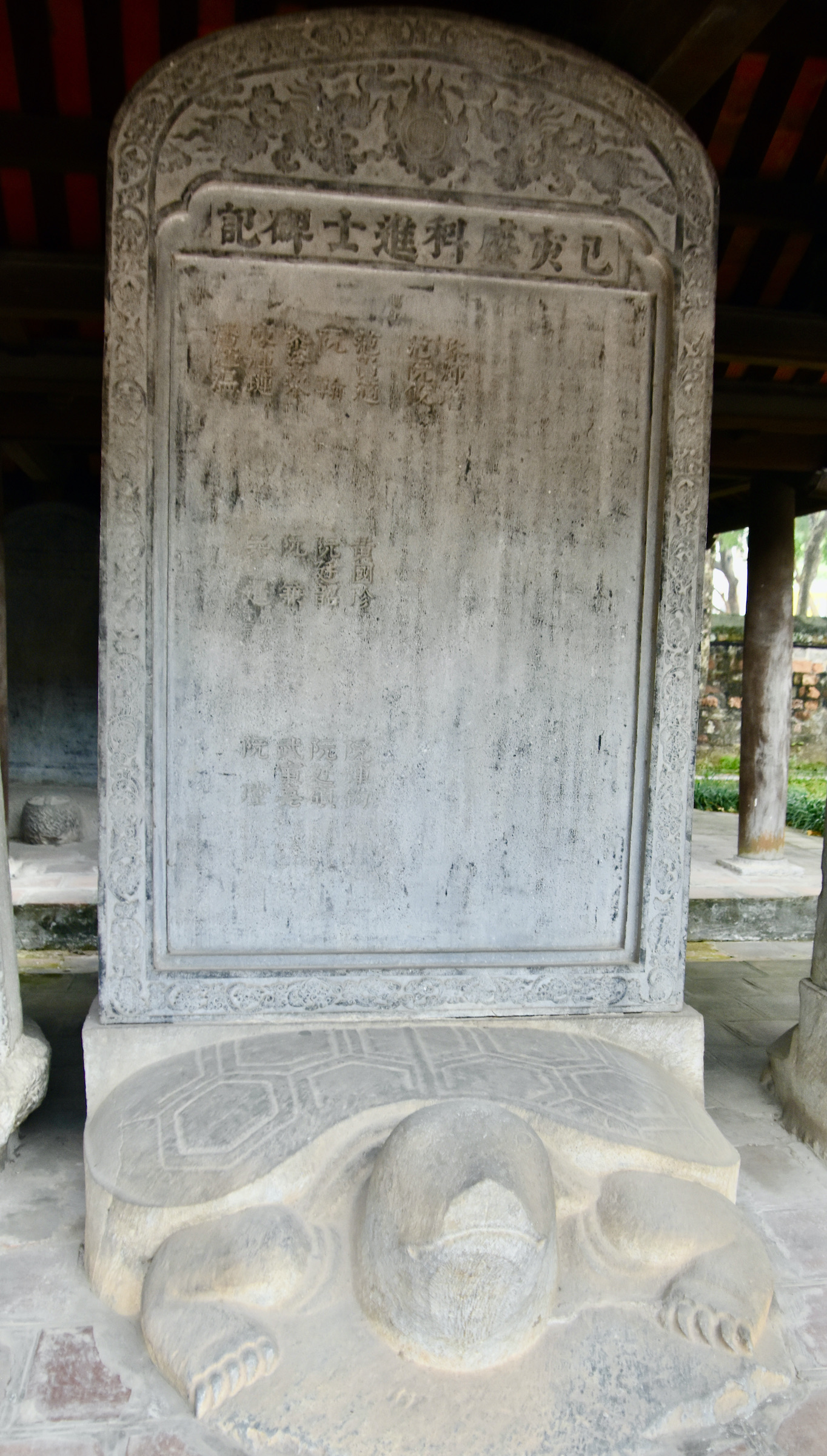
Inside the fourth courtyard is the temple dedicated to Confucius.
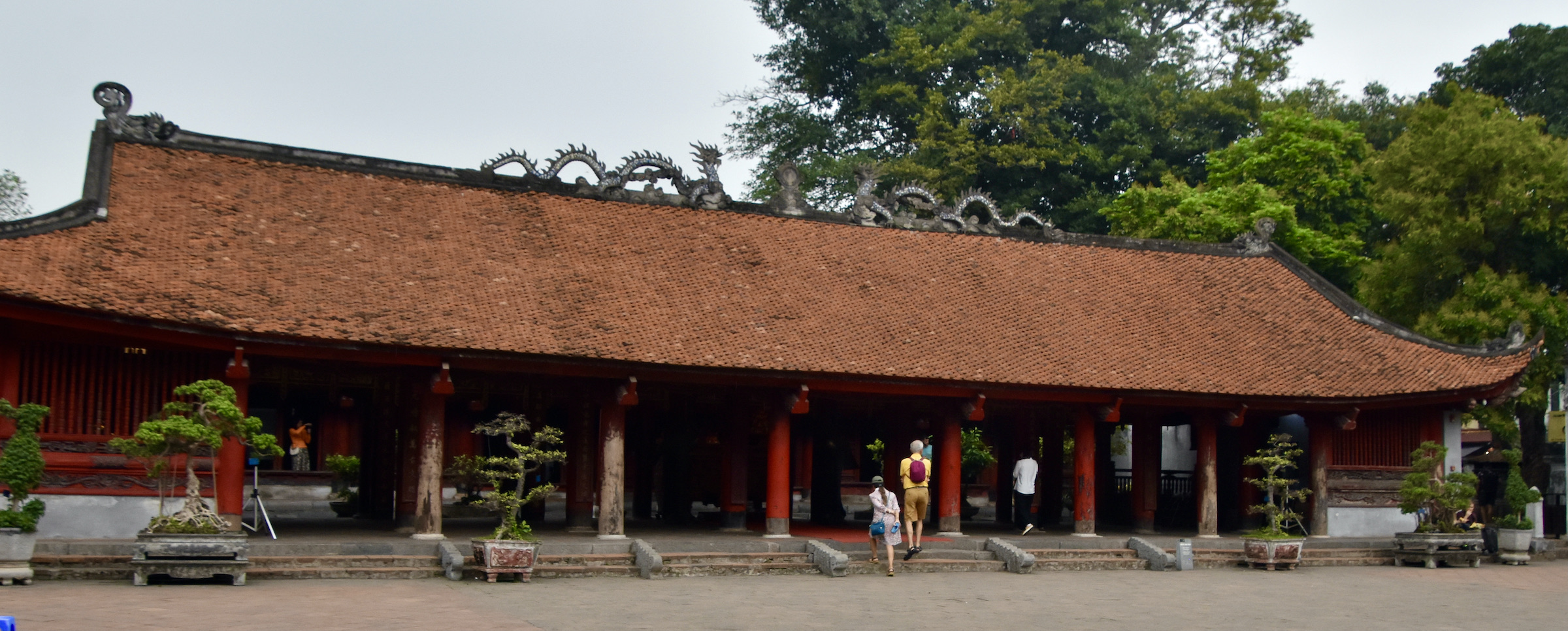
And here is the man himself, famous for his pithy sayings found inside fortune cookies.
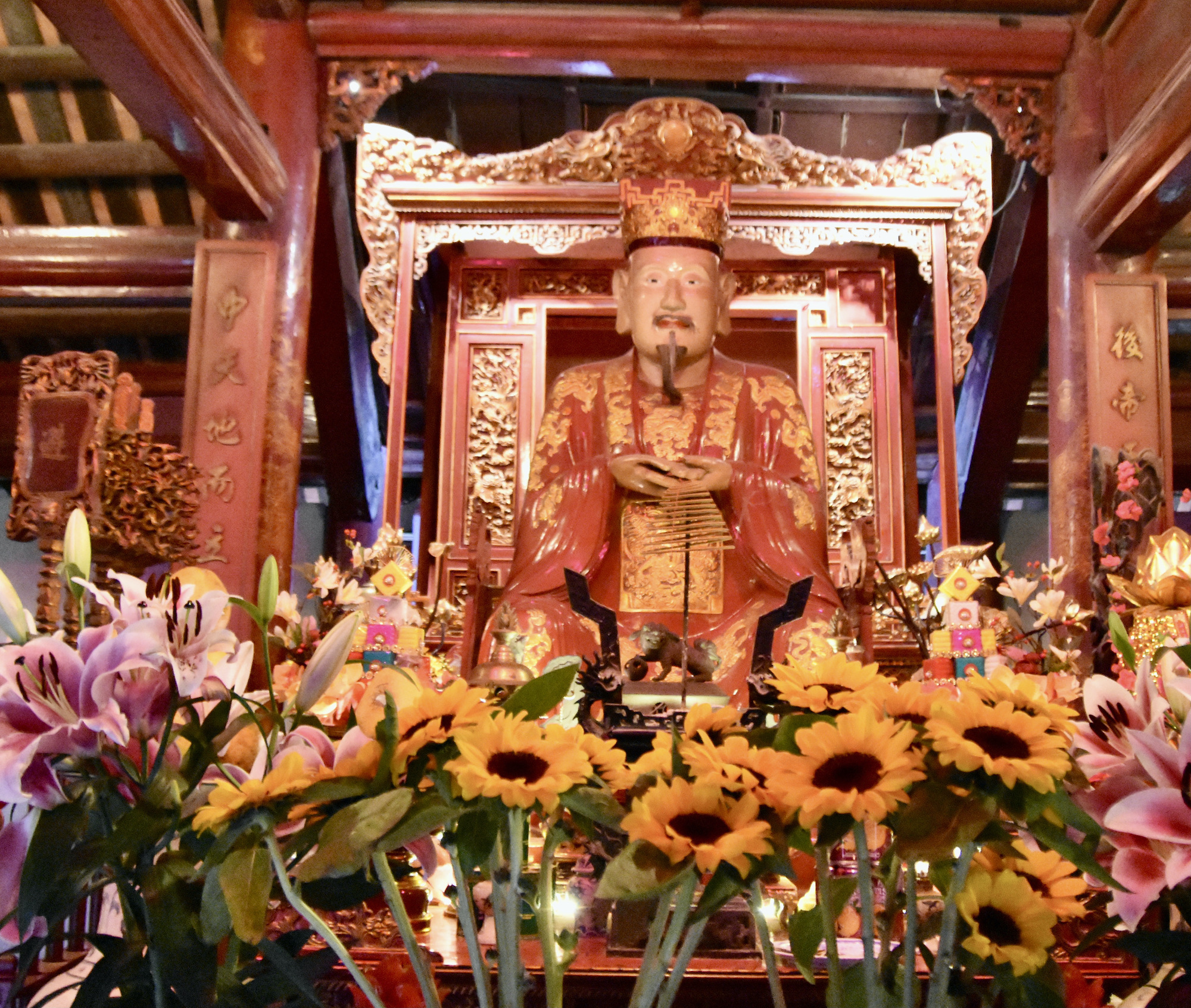
Inside the fifth courtyard is the actual site of the Imperial Academy which today is holding a photography display with some really excellent photos. That’s Deena and Simon from our group on the far right. Simon is a very good photographer and you can see some of his photos from this trip on his Instagram account – @quattrophoto2022.

The Hanoi Hilton
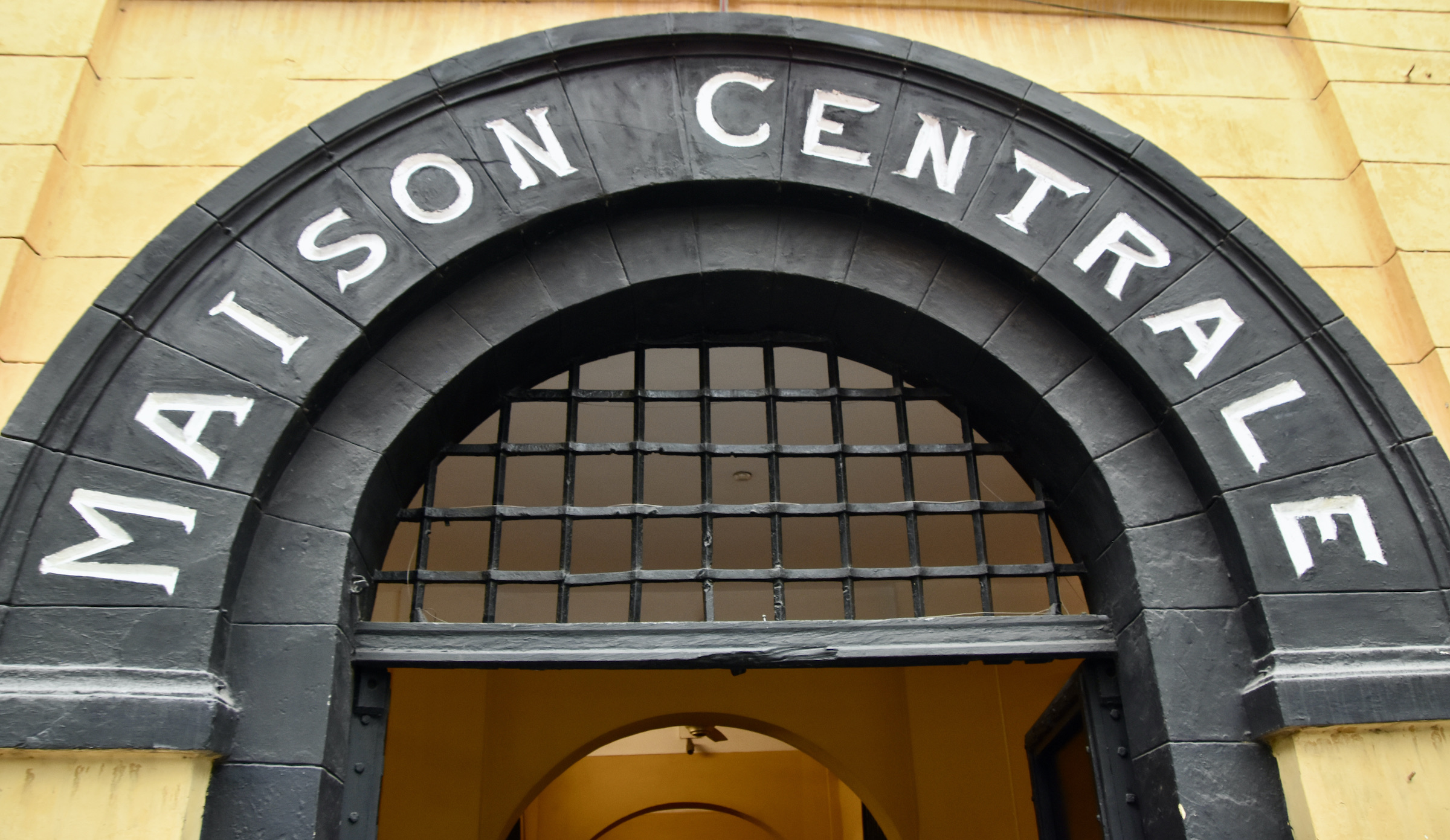
Our next stop is at a very dark place, Hòa Lò Prison, better known to westerners since the Vietnam War as the Hanoi Hilton where American prisoners of war were housed, most notably the late Senator John McCain who spent 5½ years here. Originally built by the French to house mostly political prisoners, that is the primary focus of the place today and it does indeed paint a chilling picture. Prisoners were regularly tortured as depicted in this scene.
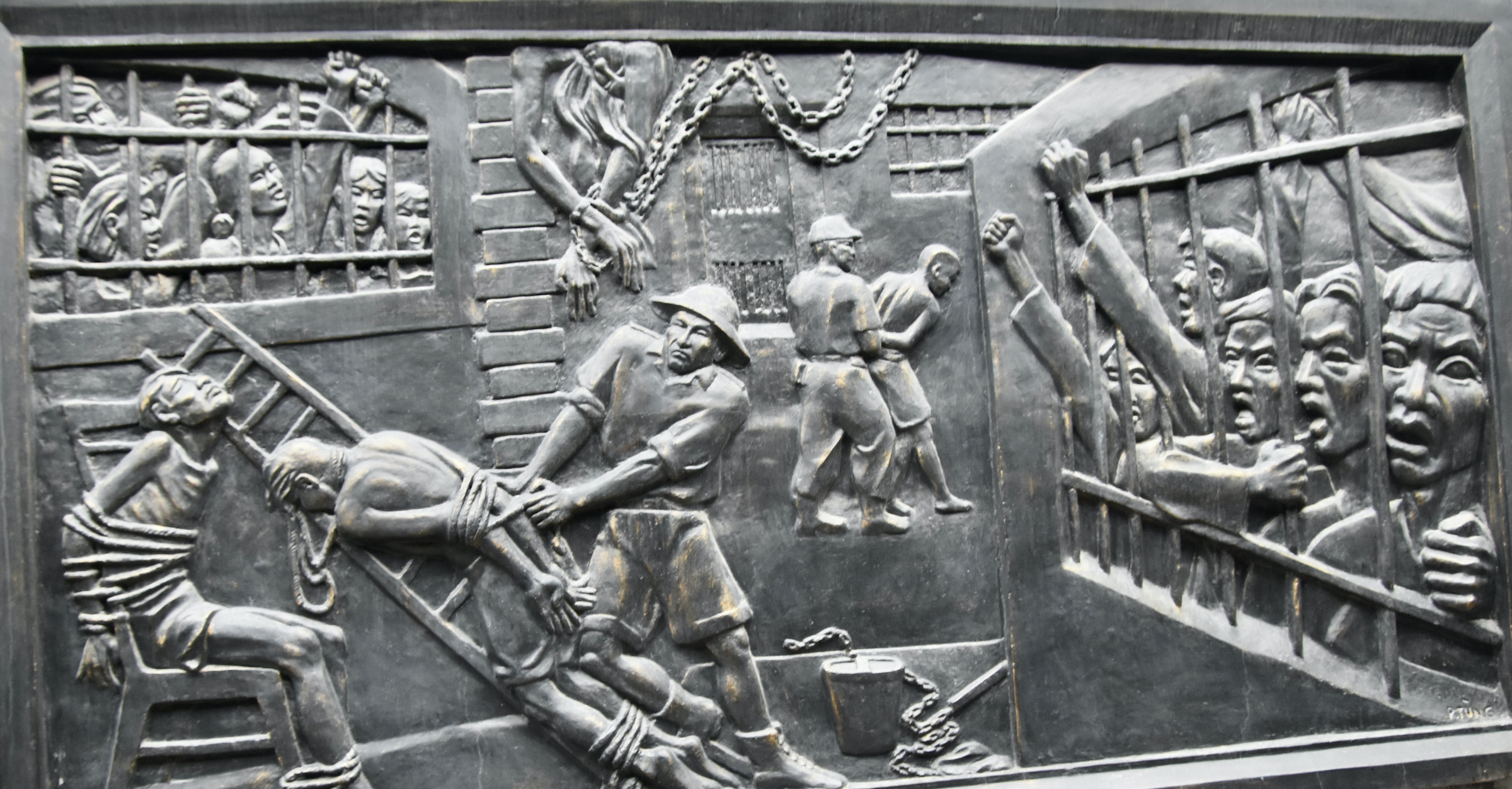
Prison conditions were abominable and the Vietnamese make sure you know that with these lifelike tableaux from what they called the Colonial Bastille.
- Prisoners
- Shackled by One Leg
- Helping a Sick Prisoner
- Women Prisoners
The guillotine was regularly used to execute prisoners and it’s still on display along with this gruesome photograph of the some of the results.
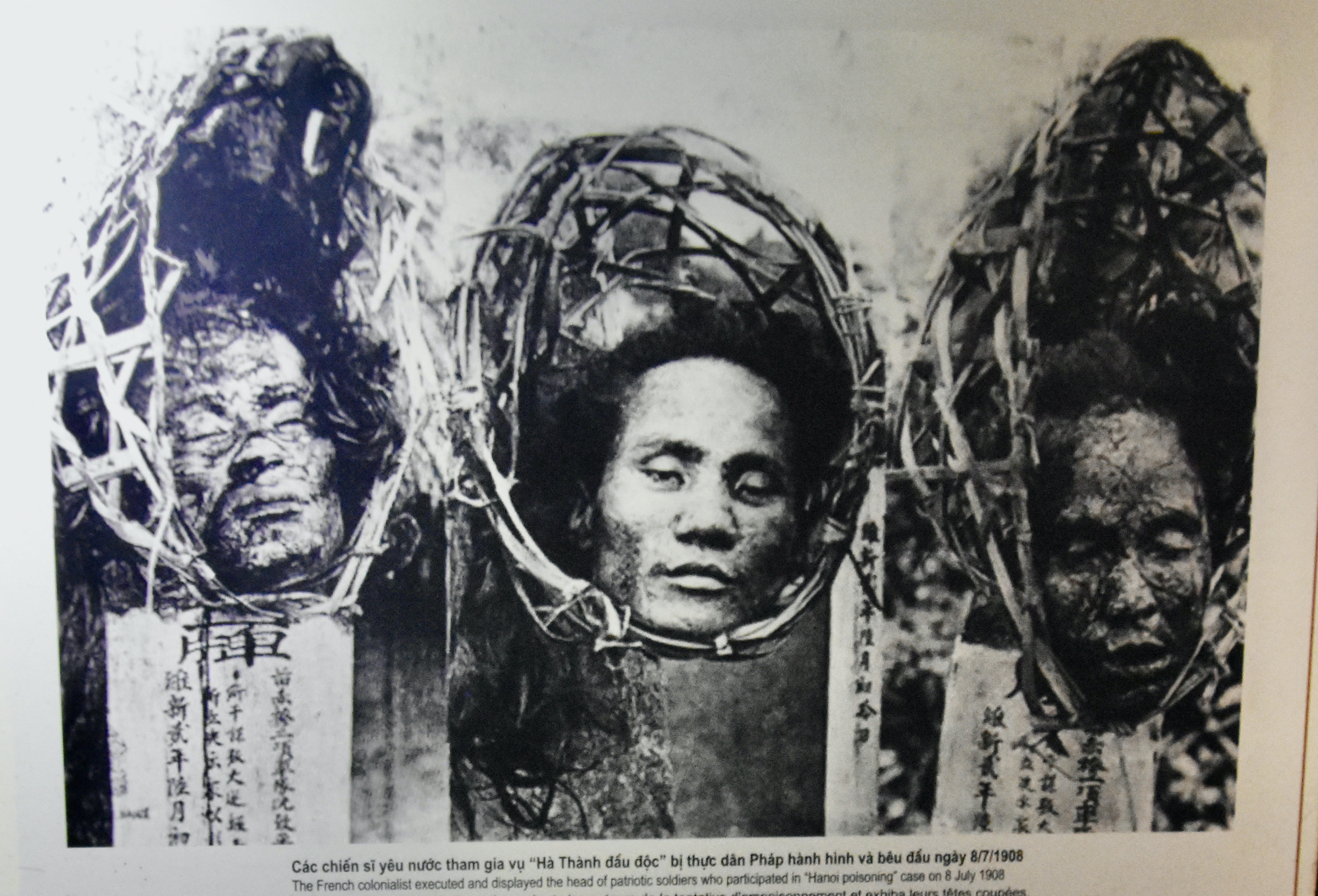
So you will definitely learn of the French mistreatment of the Vietnamese, but what of the mistreatment of American POWS by the Vietnamese? Never happened according to what you will see here. It really was more like staying in a hotel than a prison with the prisoners well fed, happy and enjoying playing basketball and other pastimes.
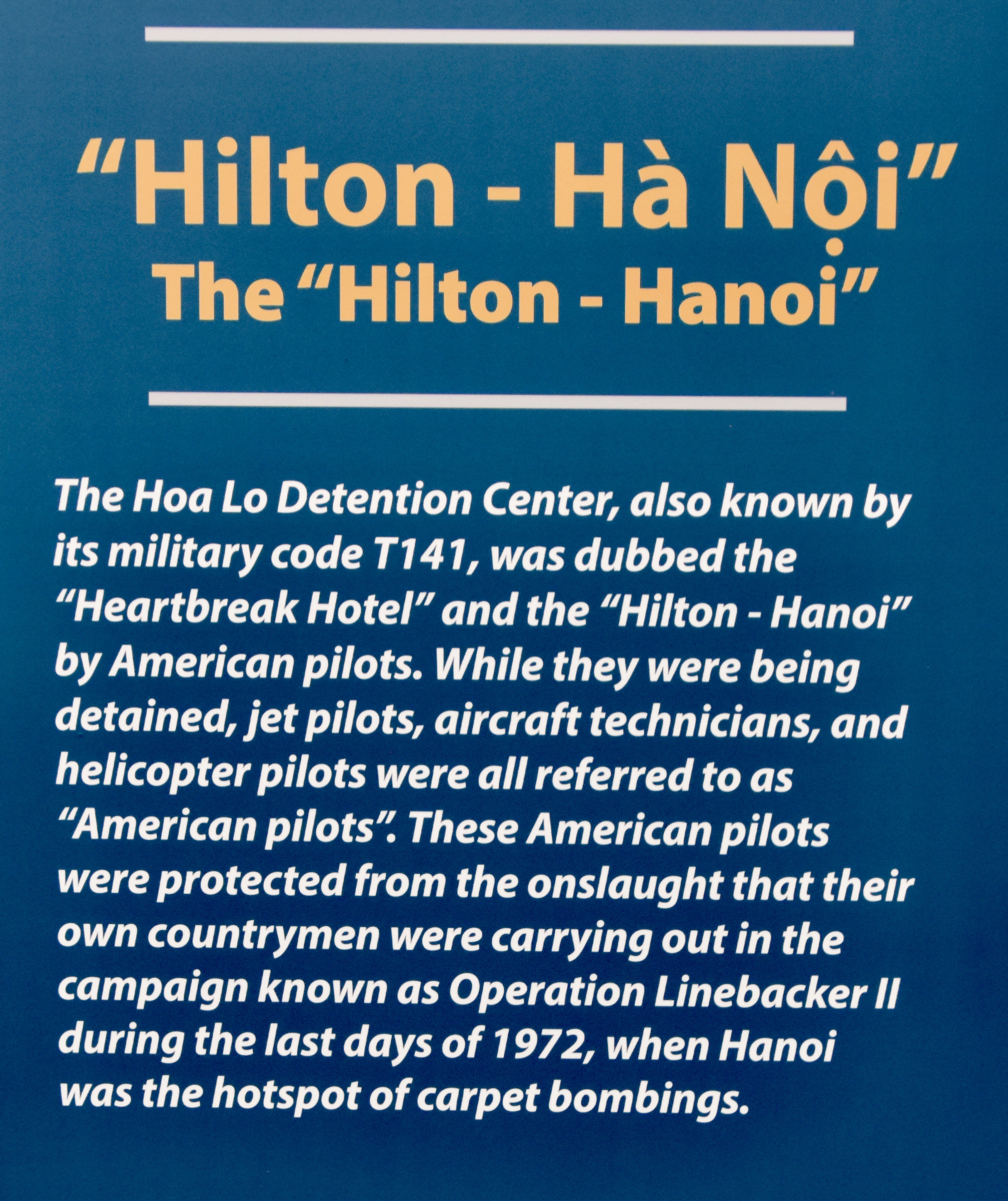
The only problem is that I remember very well the emaciated appearance of the American POWS when they were set free and the mistreatment was well documented. In fairness, North Vietnamese POWS were also mistreated by the South Vietnamese, but this failure to admit any responsibility contrasts sharply with the current mea culpa mentality of western democracies.
While a visit to the Hanoi Hilton will not leave you with a warm and fuzzy feeling, it is a place worth seeing and I would not want to see it left off the itinerary.
Ngoc Son Temple
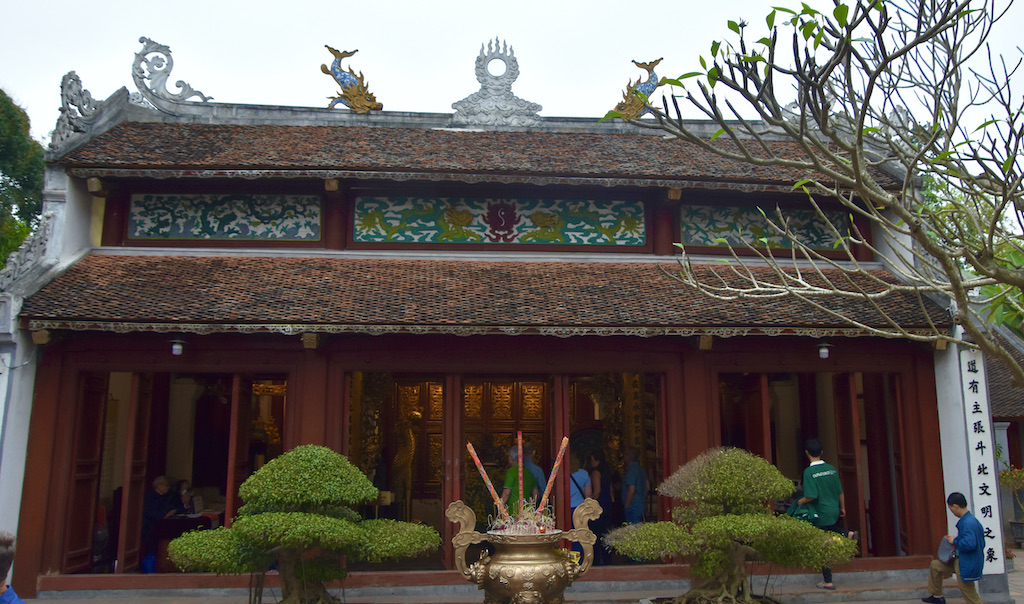
We’ll conclude our visit to Hanoi at what was originally intended to be an oasis of tranquility in the middle of the city, Ngoc Son Temple and in many ways still is. Built in the 19th century just before the French arrived, it commemorates Tran Hung Dao, the greatest military figure from Vietnam’s past and present day symbol of strength and resilience. It is located on an island in Hoan Kiem lake and you reach it by crossing the iconic Huc Bridge, one of the most recognizable tourist destinations in Hanoi. Everyone who comes to the city has to cross this bridge to claim they have really been to Hanoi.
However, before you get to the bridge you pass by the Long Mon Ho Gate which has two guardians – a dragon on the right and a white tiger on the left. Notice the dragon seems to be engulfed in some type of cloud. I could not help but thinking of the movie Crouching Tiger, Hidden Dragon and apparently the presence of these two creatures does have some real significance, however, it is beyond my ken to say what that is. I just enjoyed the majesty of the two figures.
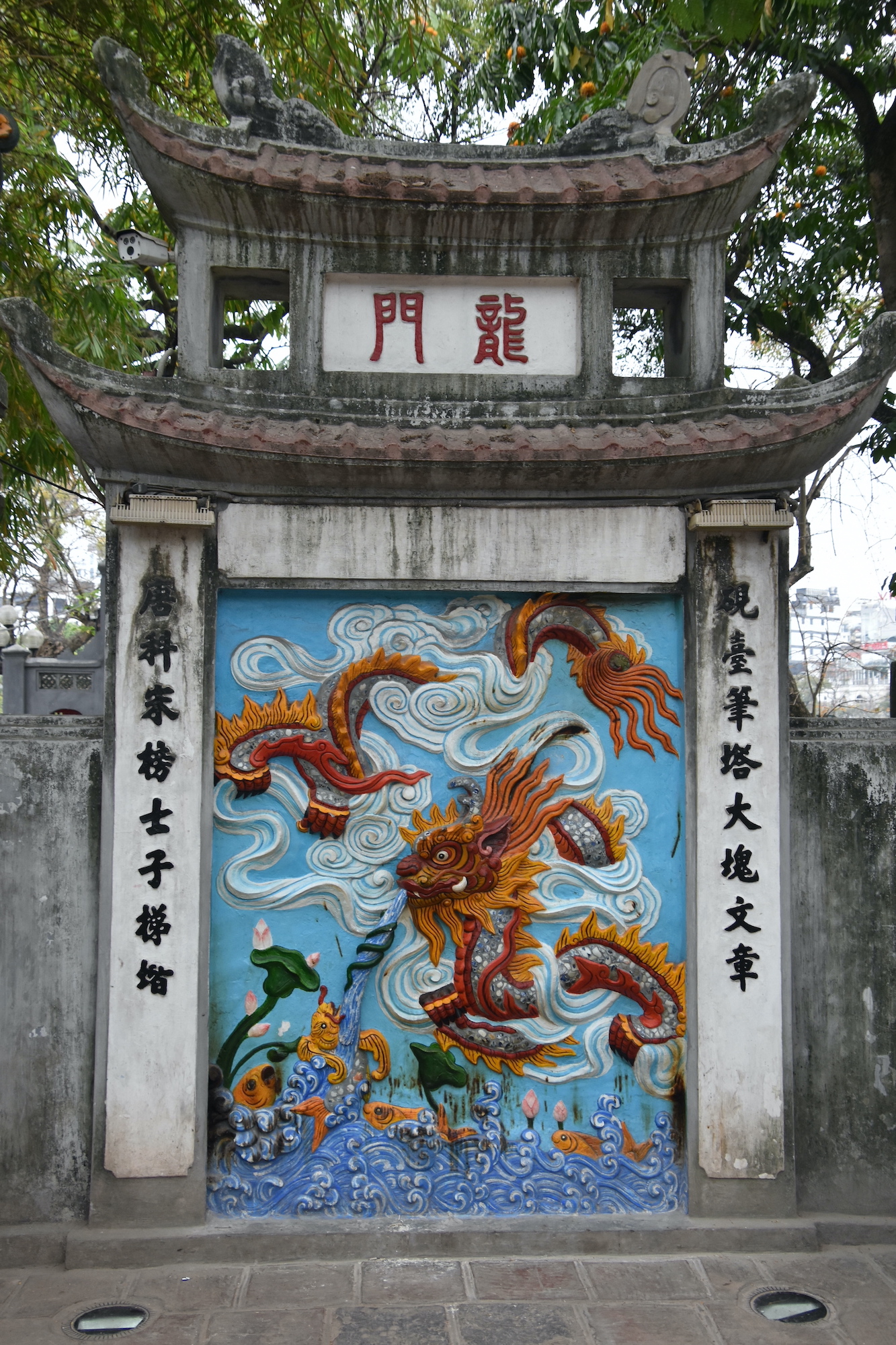
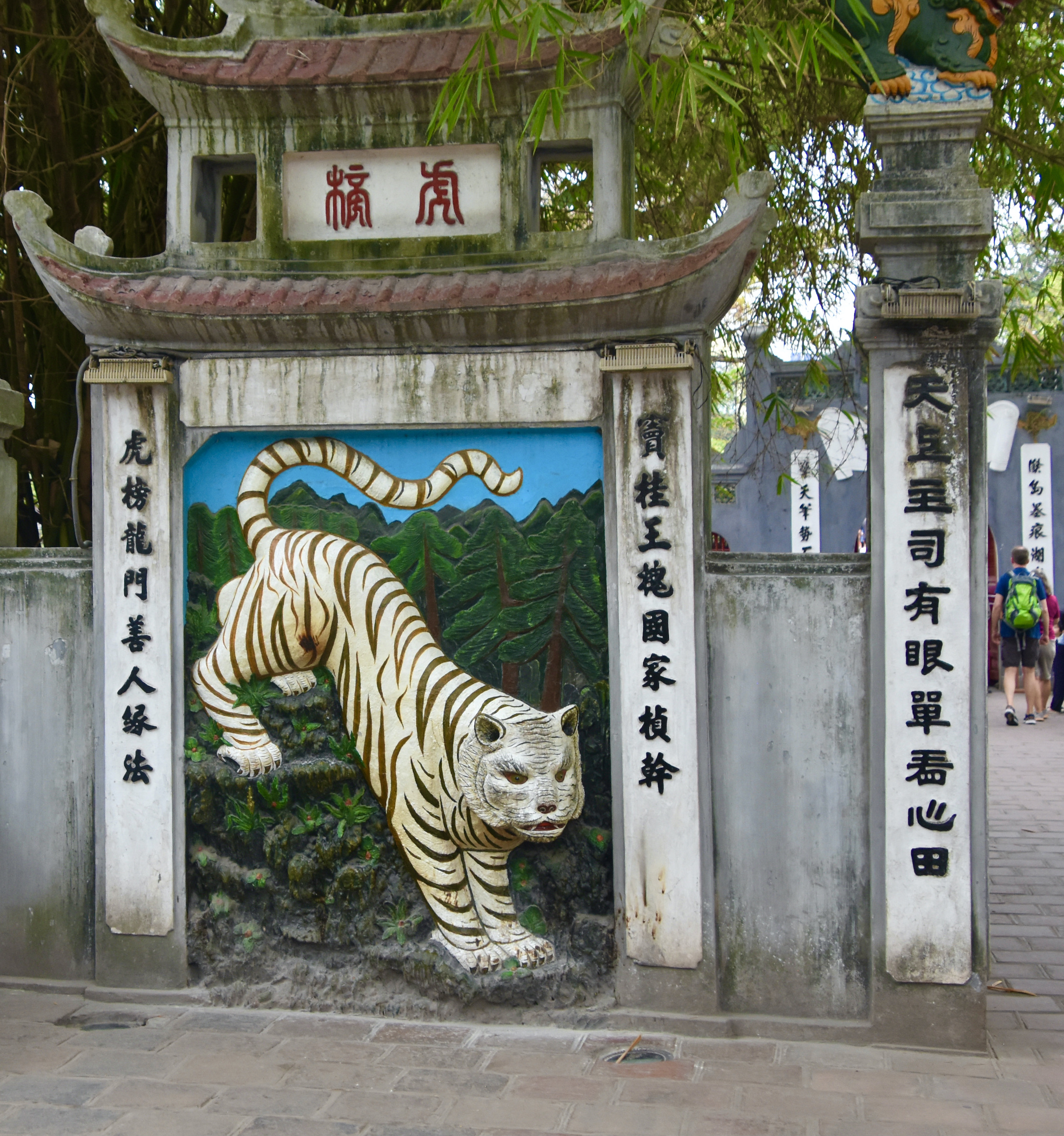
Now we cross that famous bridge.
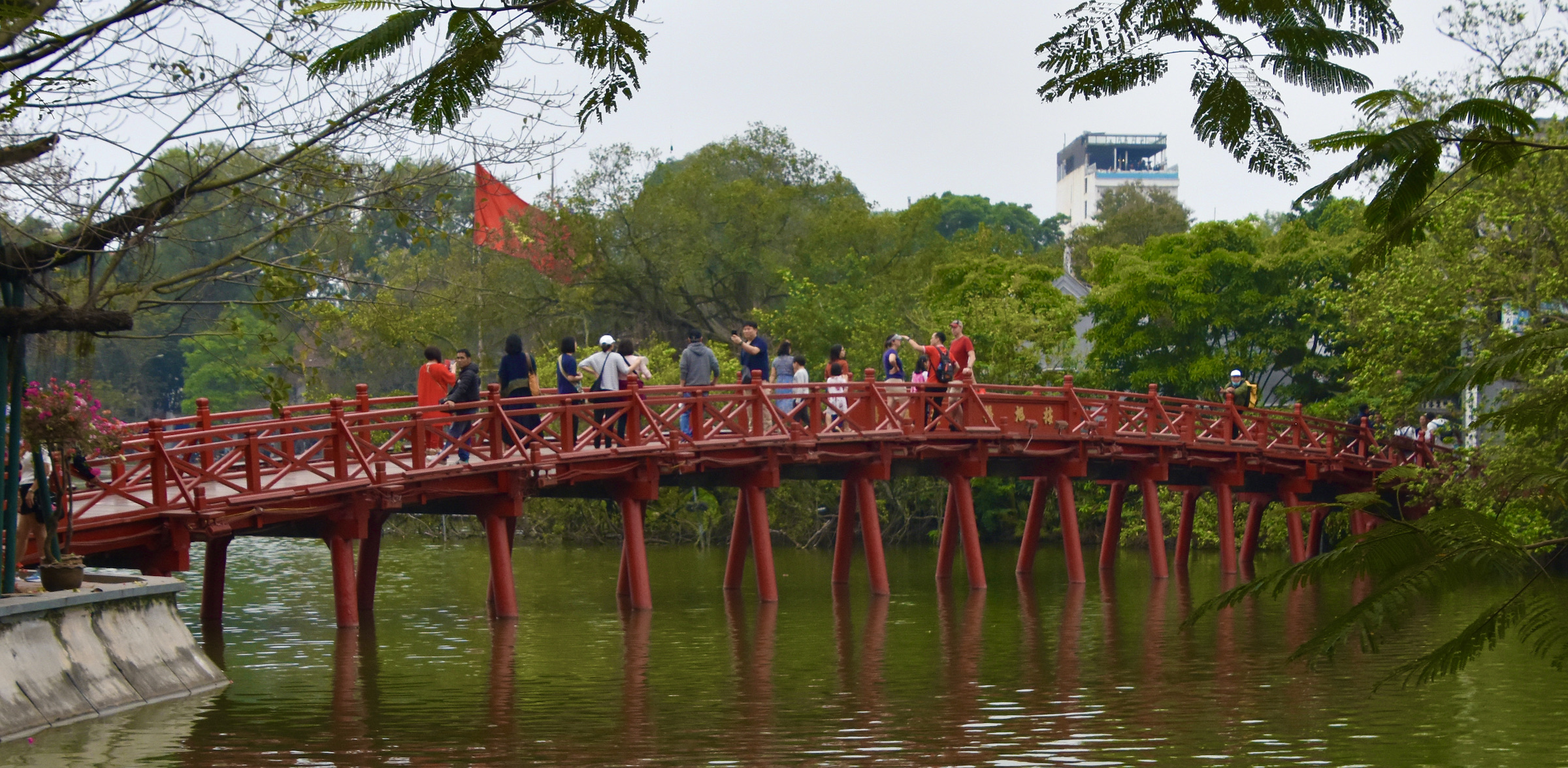
On the far side of the bridge is the Dac Nguyet Lau aka the Moon Gazing Pavilion.
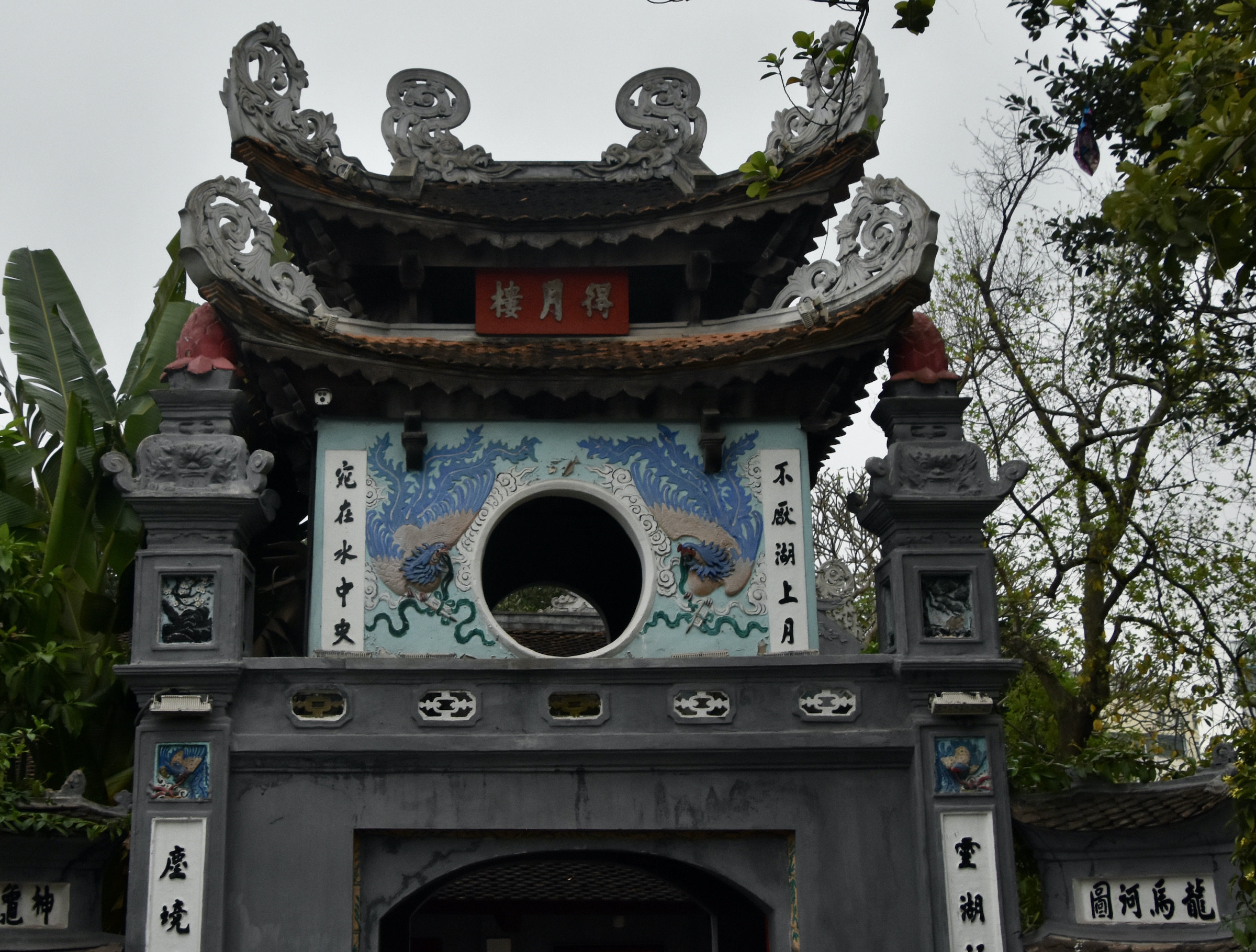
After passing through that you get to the temple which is the photo at the start of this entry. Inside is the largest freshwater turtle I have ever seen. Apparently this one that died in 1967 at the hands of an abusive fisherman who brained it with a crowbar. It weighs 440 pounds (200 kg.). The last known giant turtle died in 2016, but many people still think that there are a few alive in the lake. How something this big in a city this big could go unnoticed kind of makes me doubt it.
Don’t ask me why, buy I got a bit teary looking at this poor turtle, just as I did when I visited the last place a Carolina parakeet was ever seen in the wild at Kissimmee Prairie Preserve in Florida. There’s something just not right about how we treat our fellow creatures, but just having come from the Hanoi Hilton we don’t restrict it to other species. WTF is wrong with us?
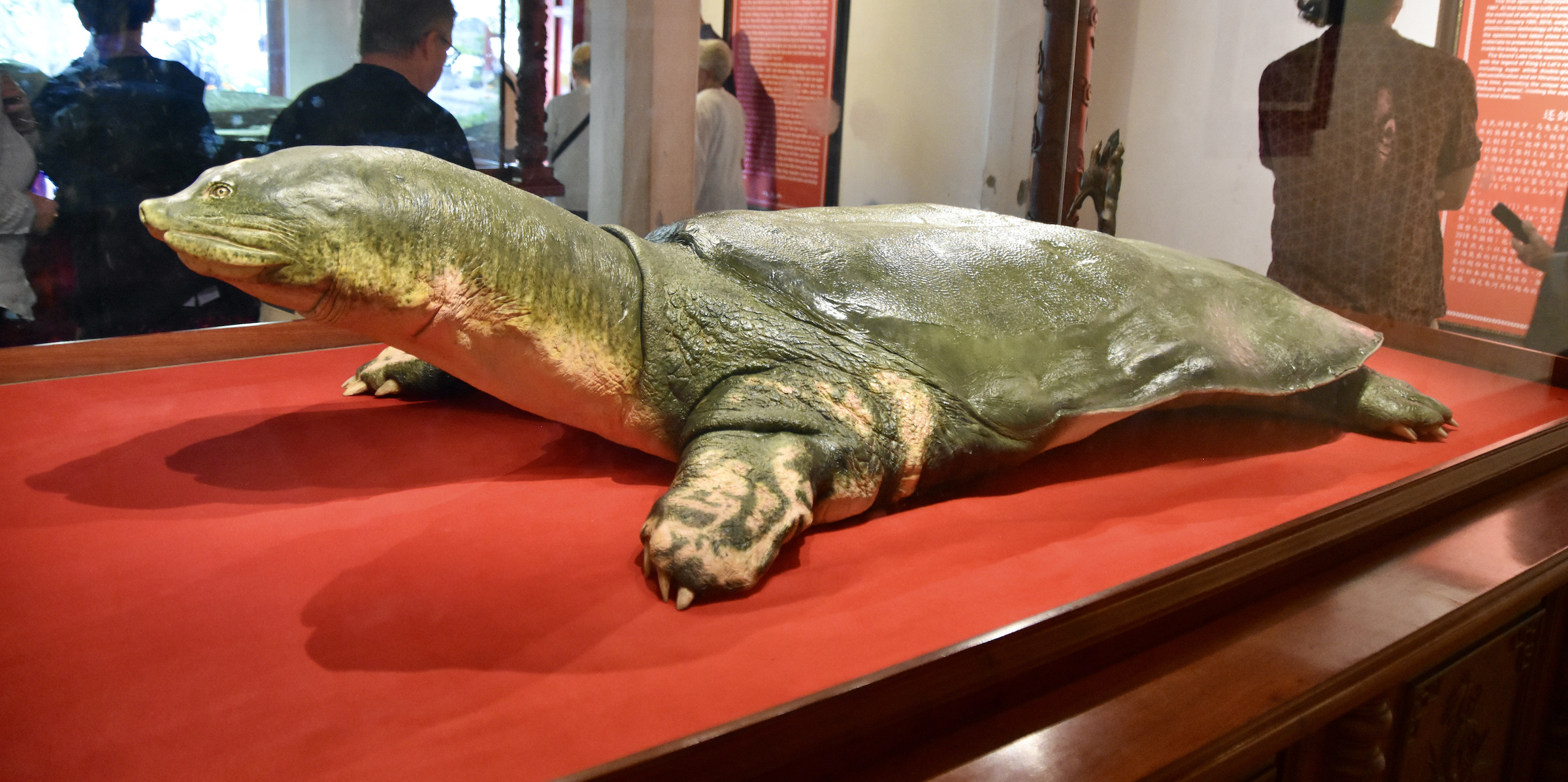
I’m not going to end this post on a sour note so we’ll leave the temple complex and just do a walk around in the centre of old Hanoi.
Claude led us through a myriad of side streets where street vendors offer a huge variety of choices. This is the Hanoi that Tony Bourdain loved and now I know why.
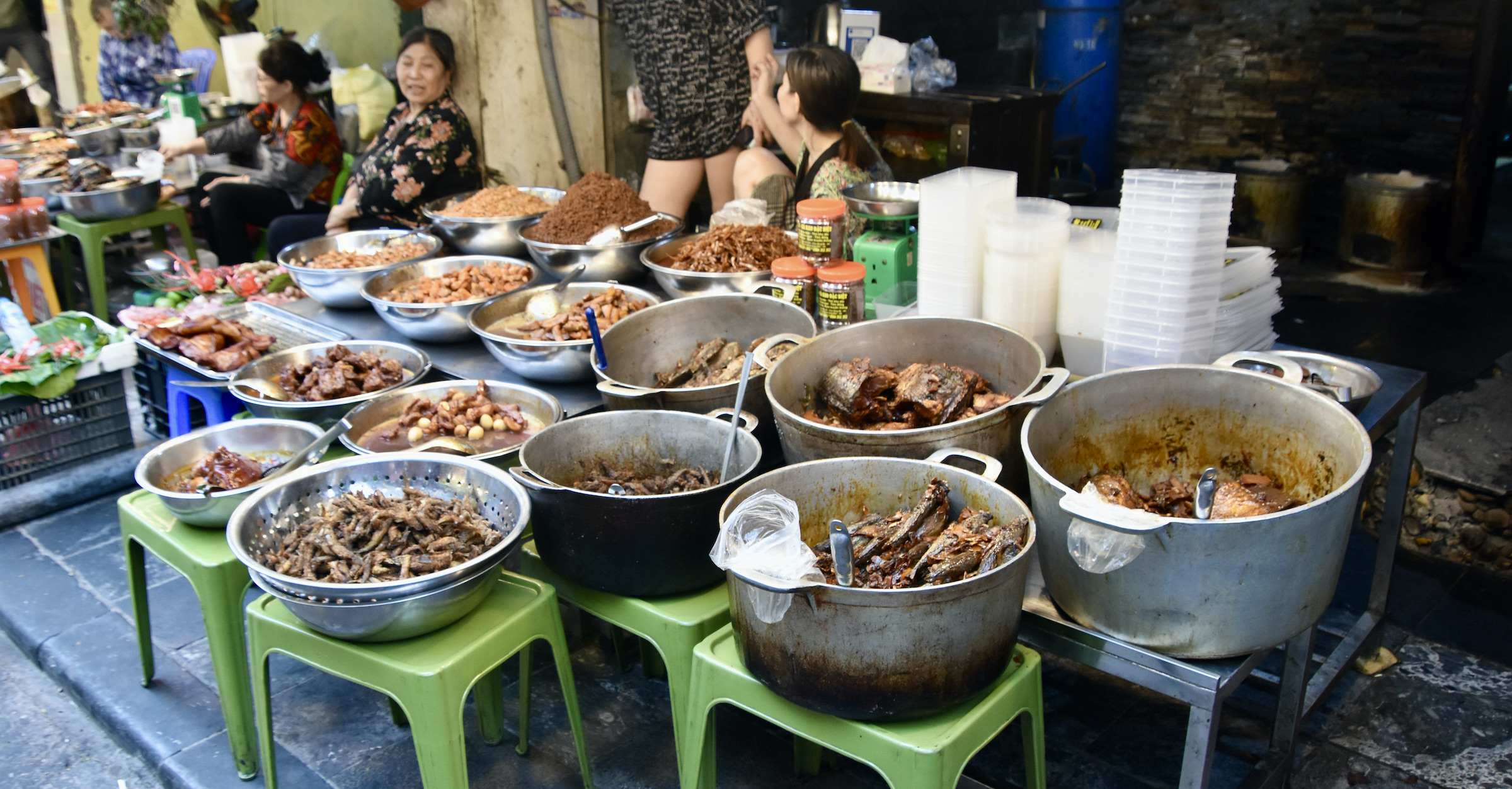
The aromas, colours, sounds, textures and tastes hit on all five senses in this flow of humanity through the narrow lanes of this part of Hanoi. I can very easily picture Tony trying something from one of the cooking pots and looking at the camera with a devilish smile on his face.
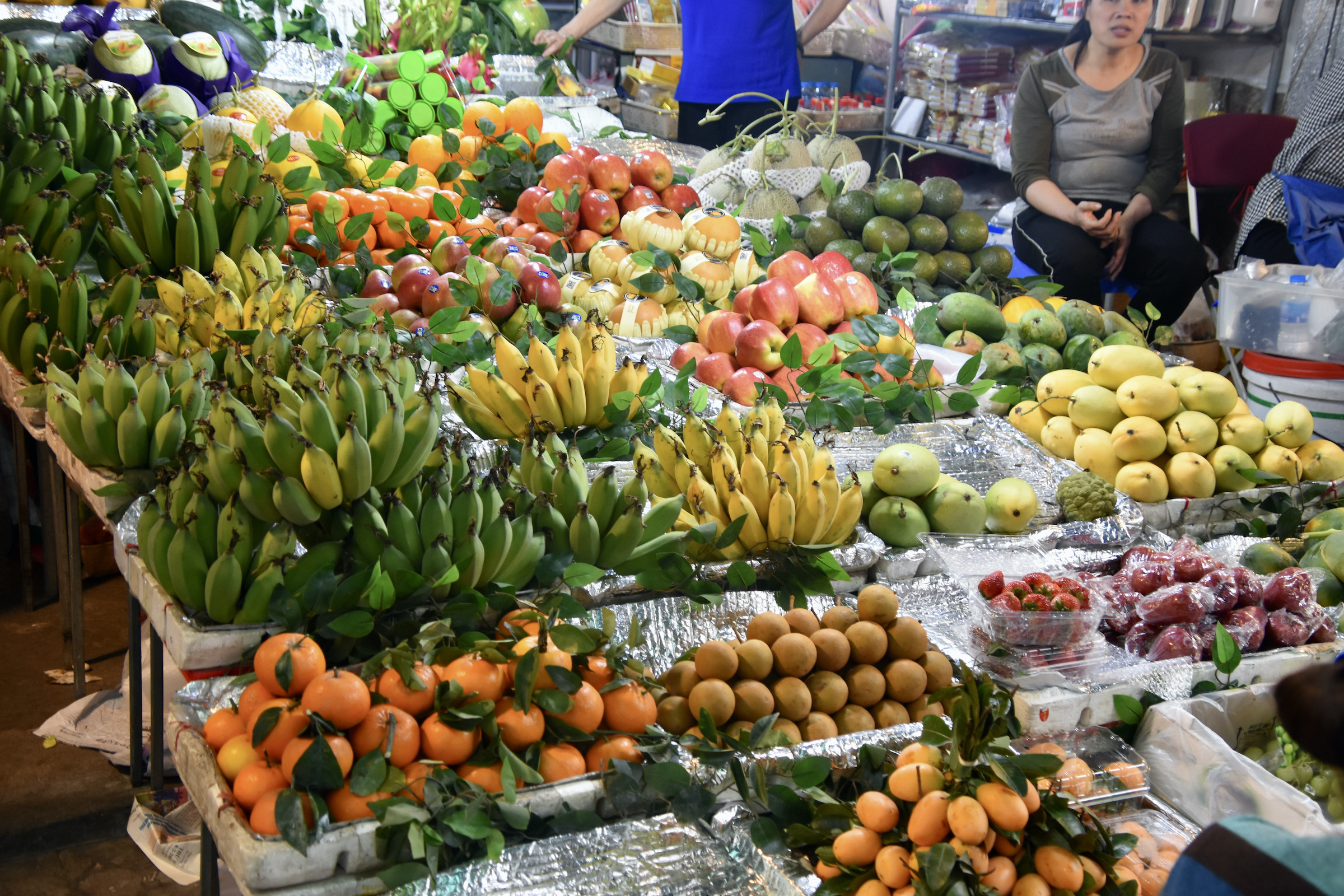
As we wend our way through streets like this Claude has a destination in mind and it’s not a massage parlour.
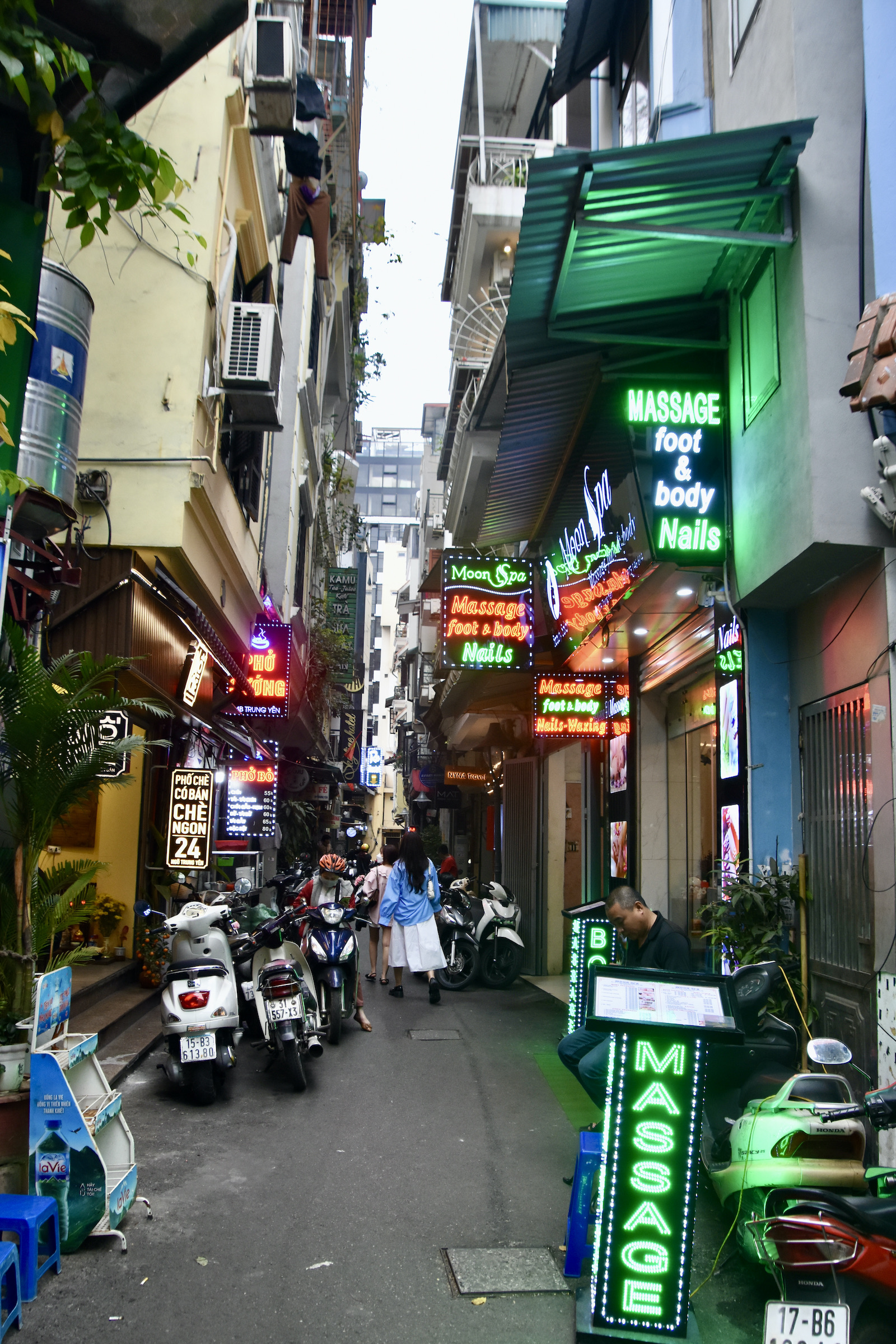
Hanoi has an ancient tradition of water puppetry which is something I had never heard of until I saw some of these puppets on display at the Ethnological Museum. Now we are going to see a performance at the Thang Long Water Puppet Theatre.
The performance lasts 45 minutes and is a combination of humour, illusion and pageantry. That’s about the best way I can describe it. Suffice it to say this is something well worth seeing and a fitting way to end our visit to Hanoi.
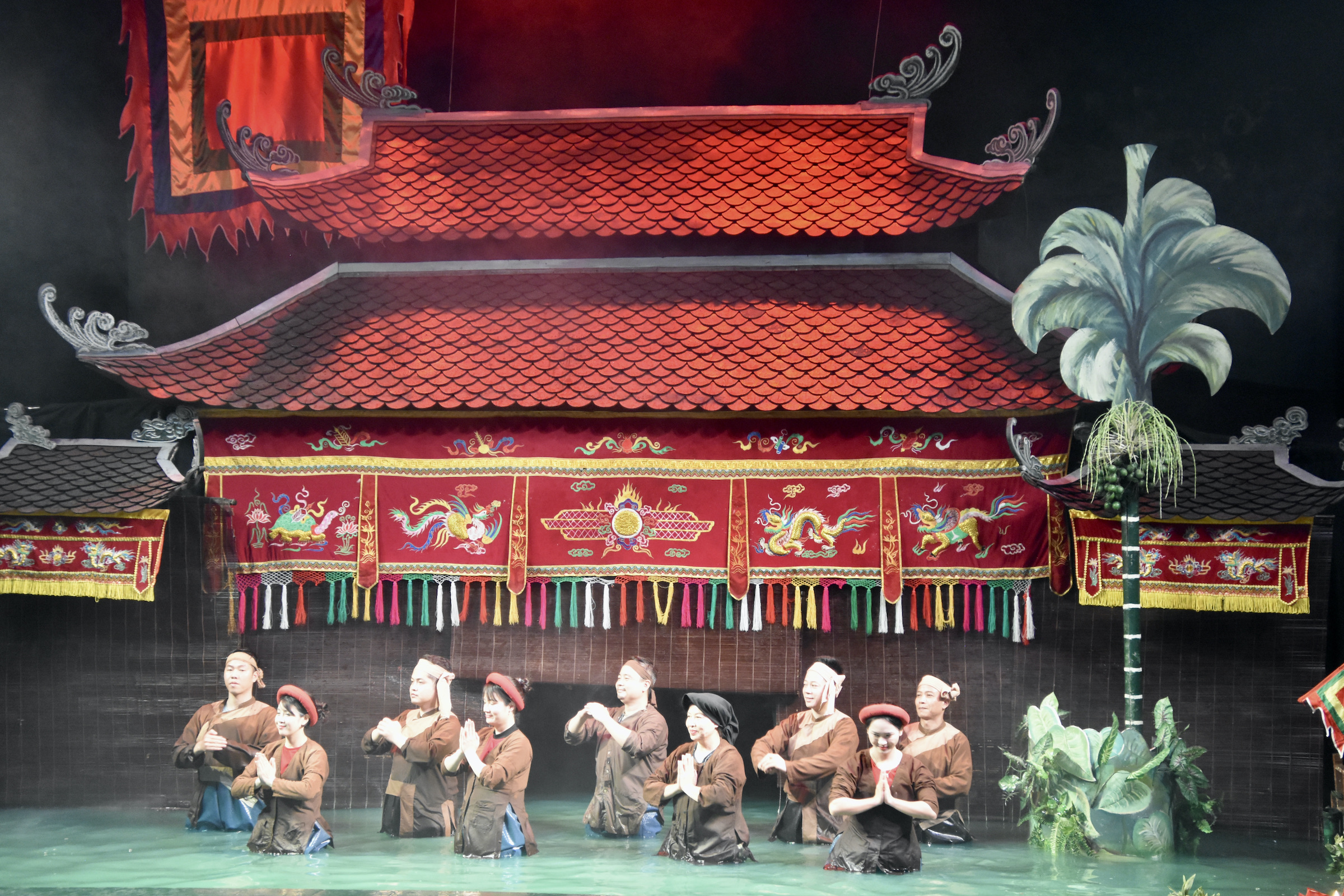
As we check out of the hotel the next morning this little guy peaked around the corner at me. While most people can’t resist photographing cats, me included, nothing beats a cute dog.
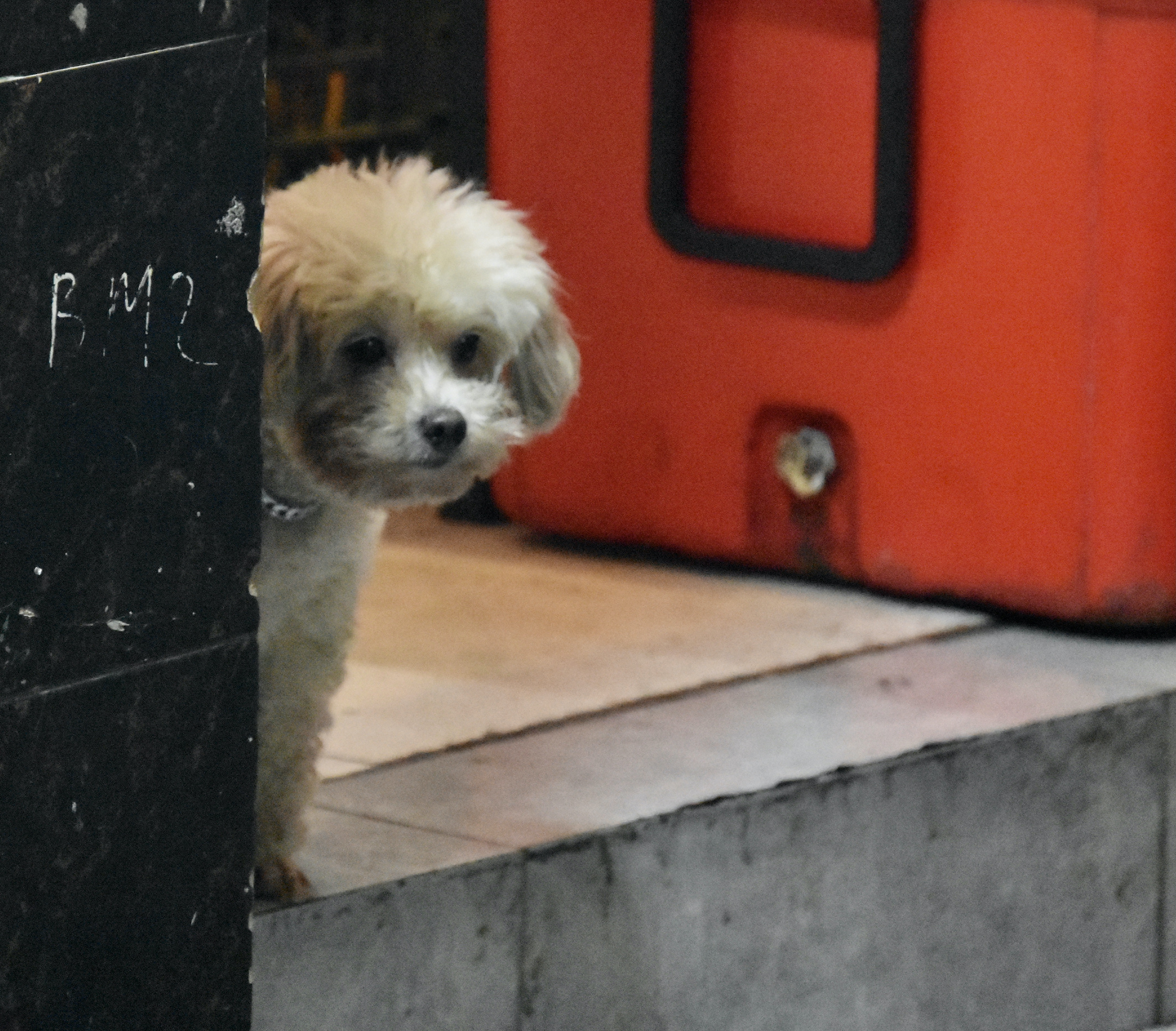
In the next post we’ll leave Hanoi and head to the rice fields where we’ll learn how to plant the stuff as well as a lesson in how to make spring rolls. It was one of the best days on the tour. Hope to see you there.


